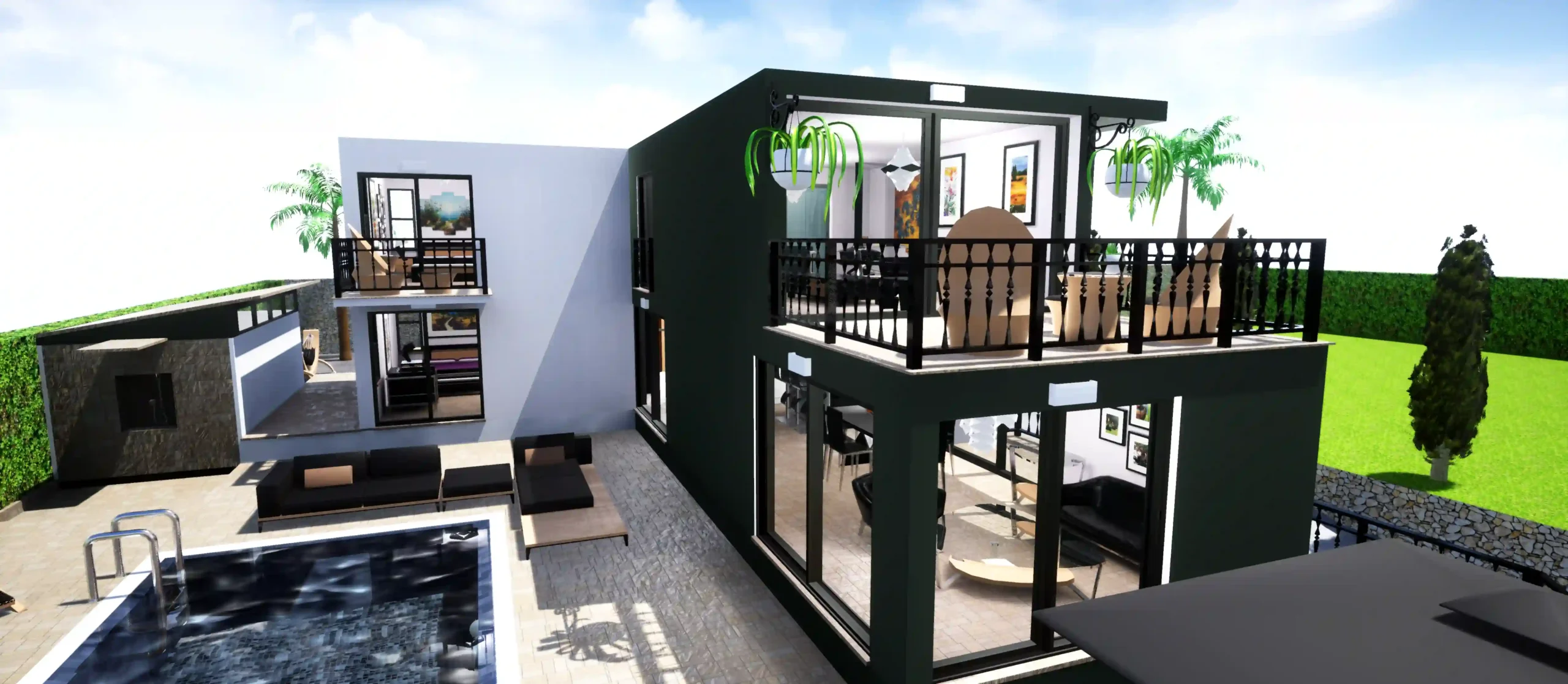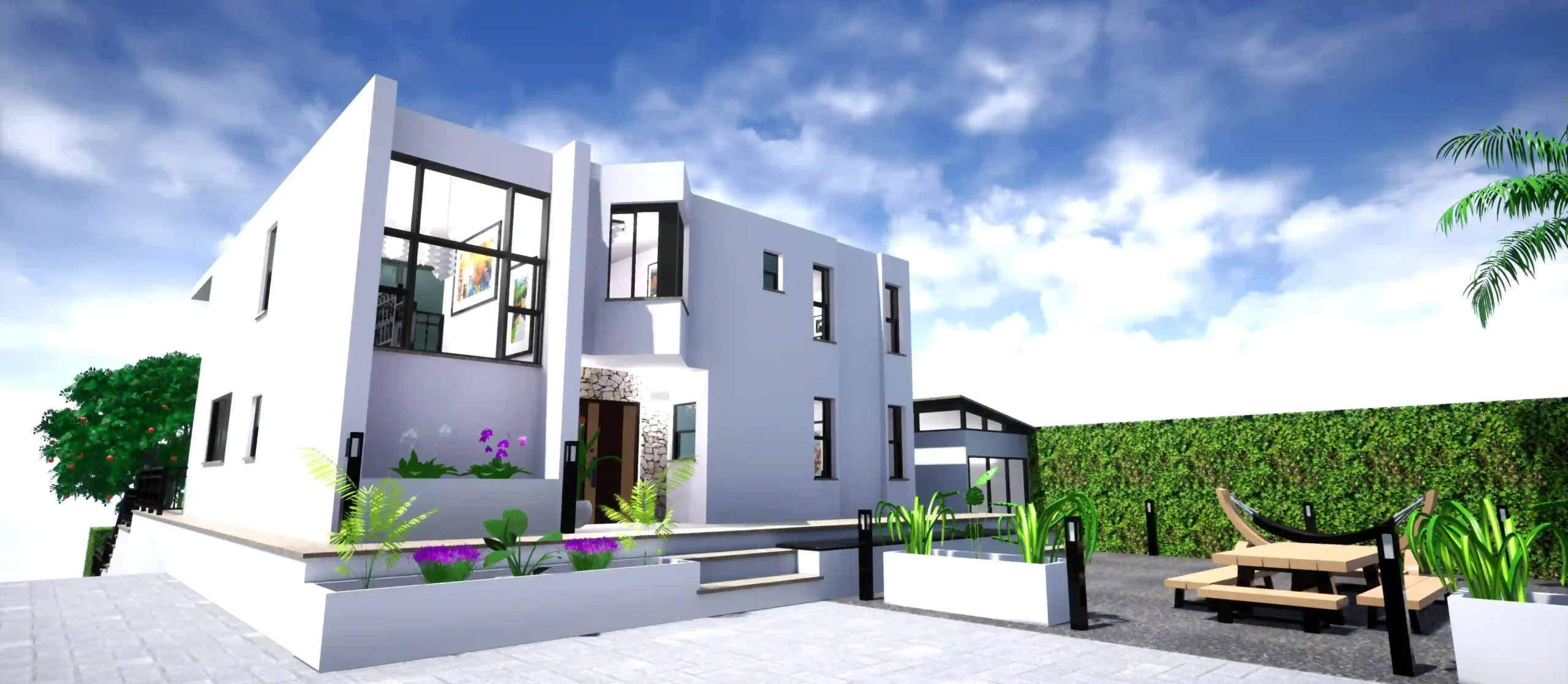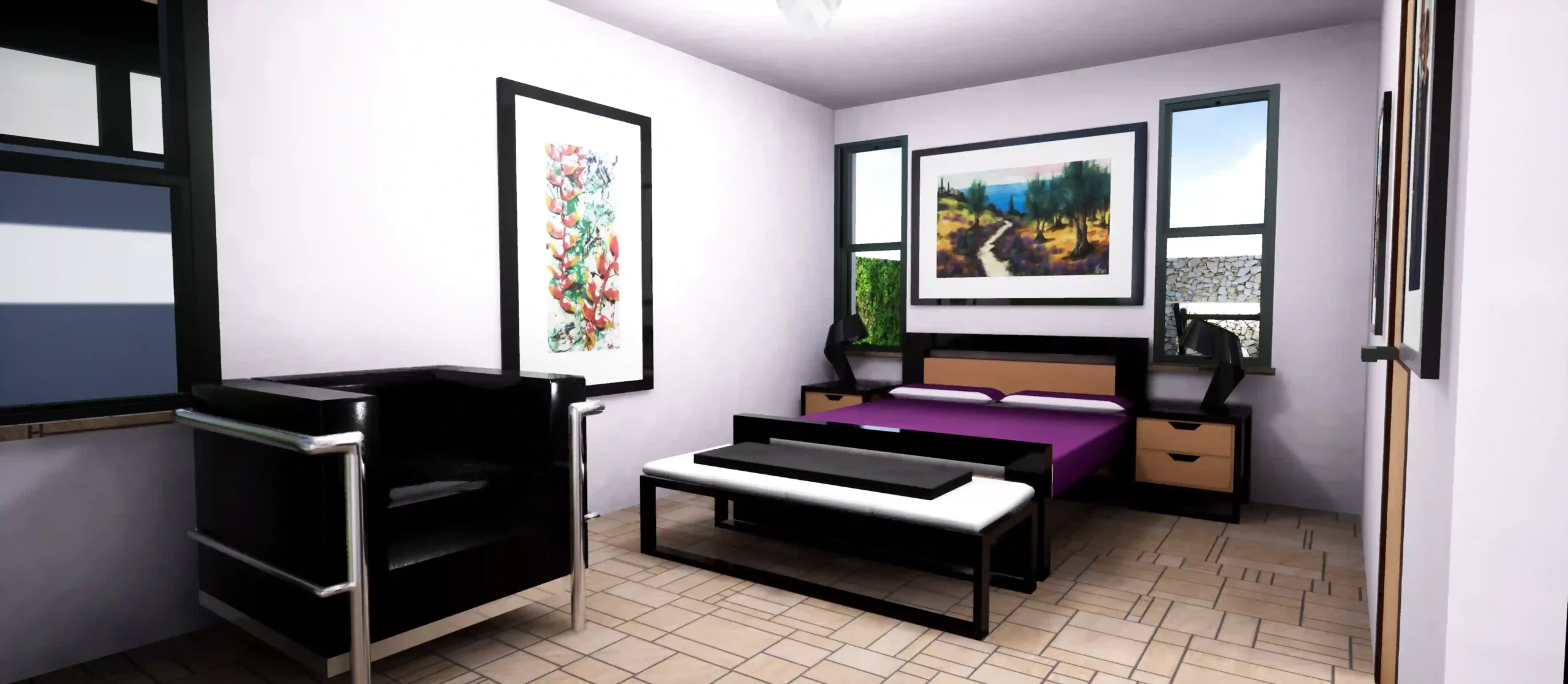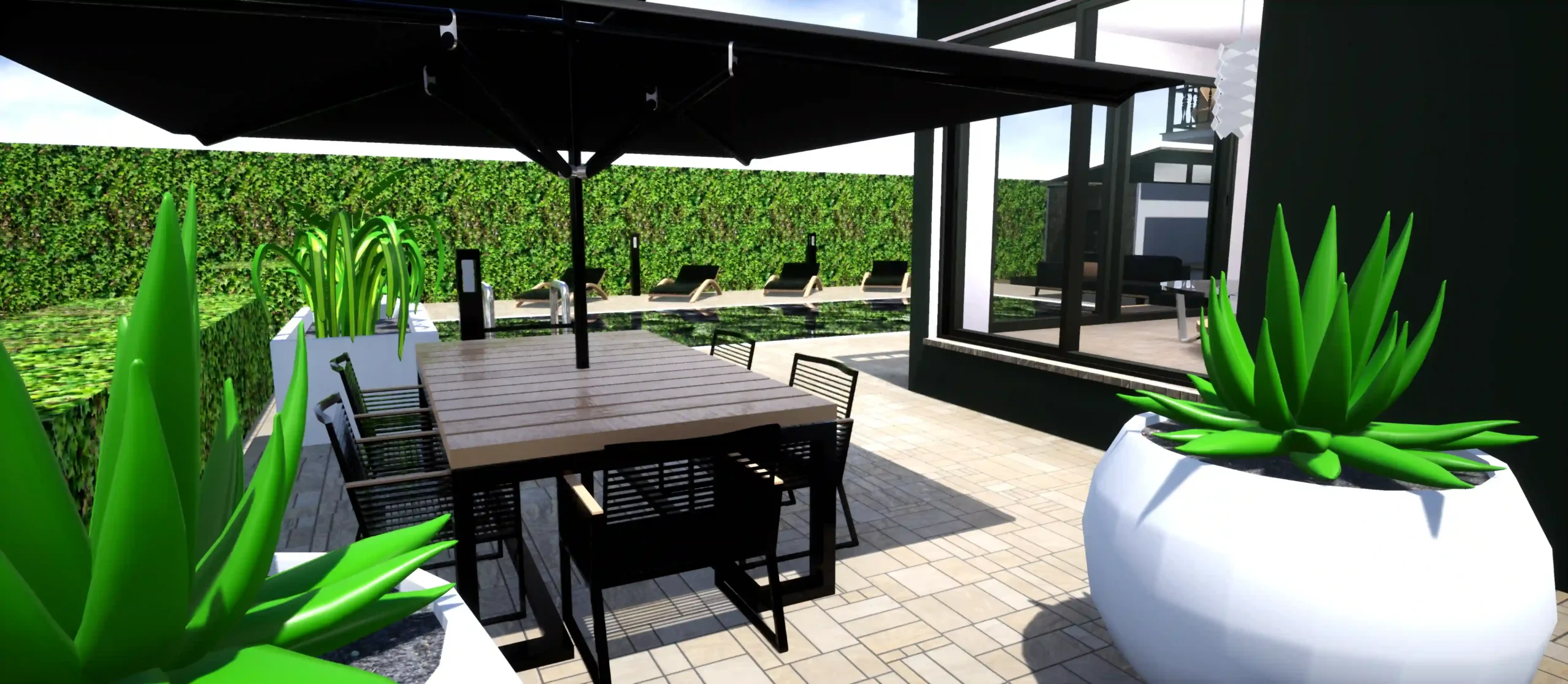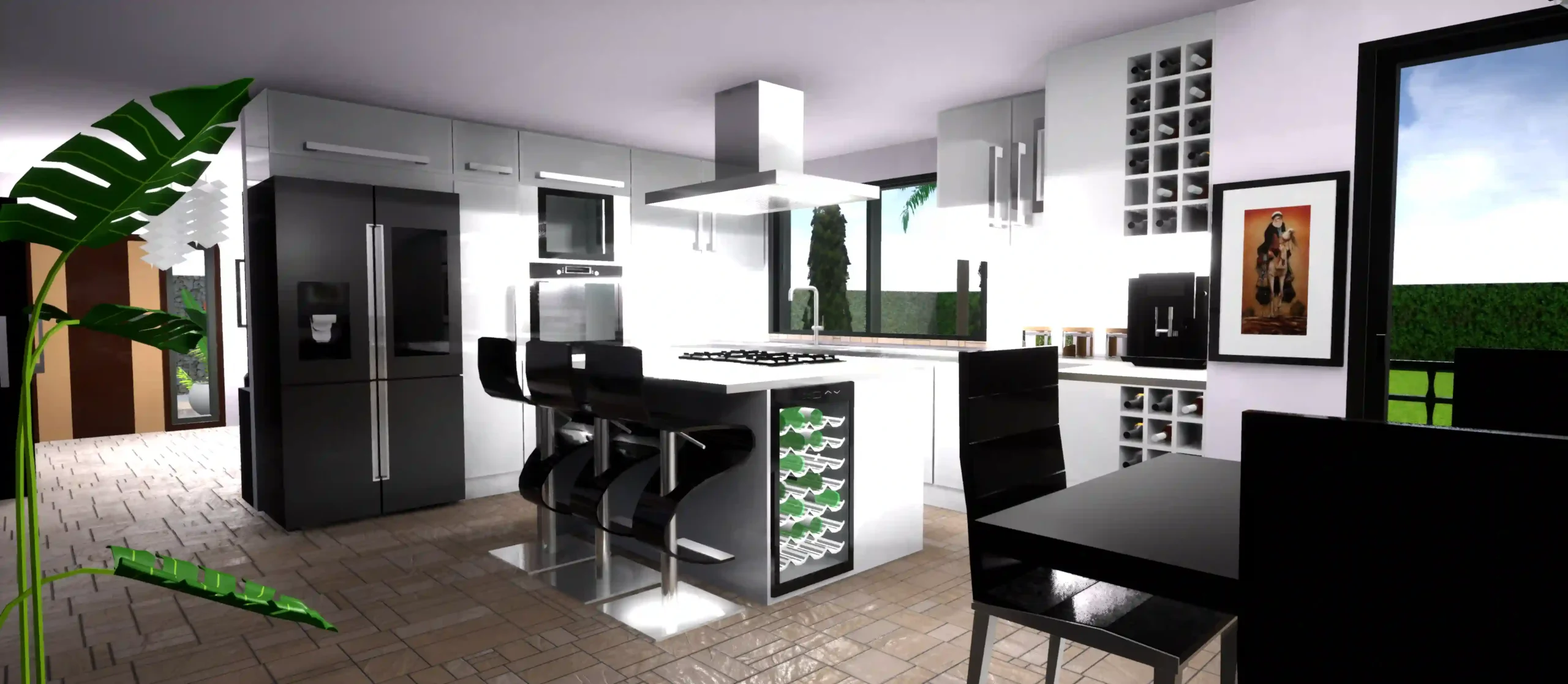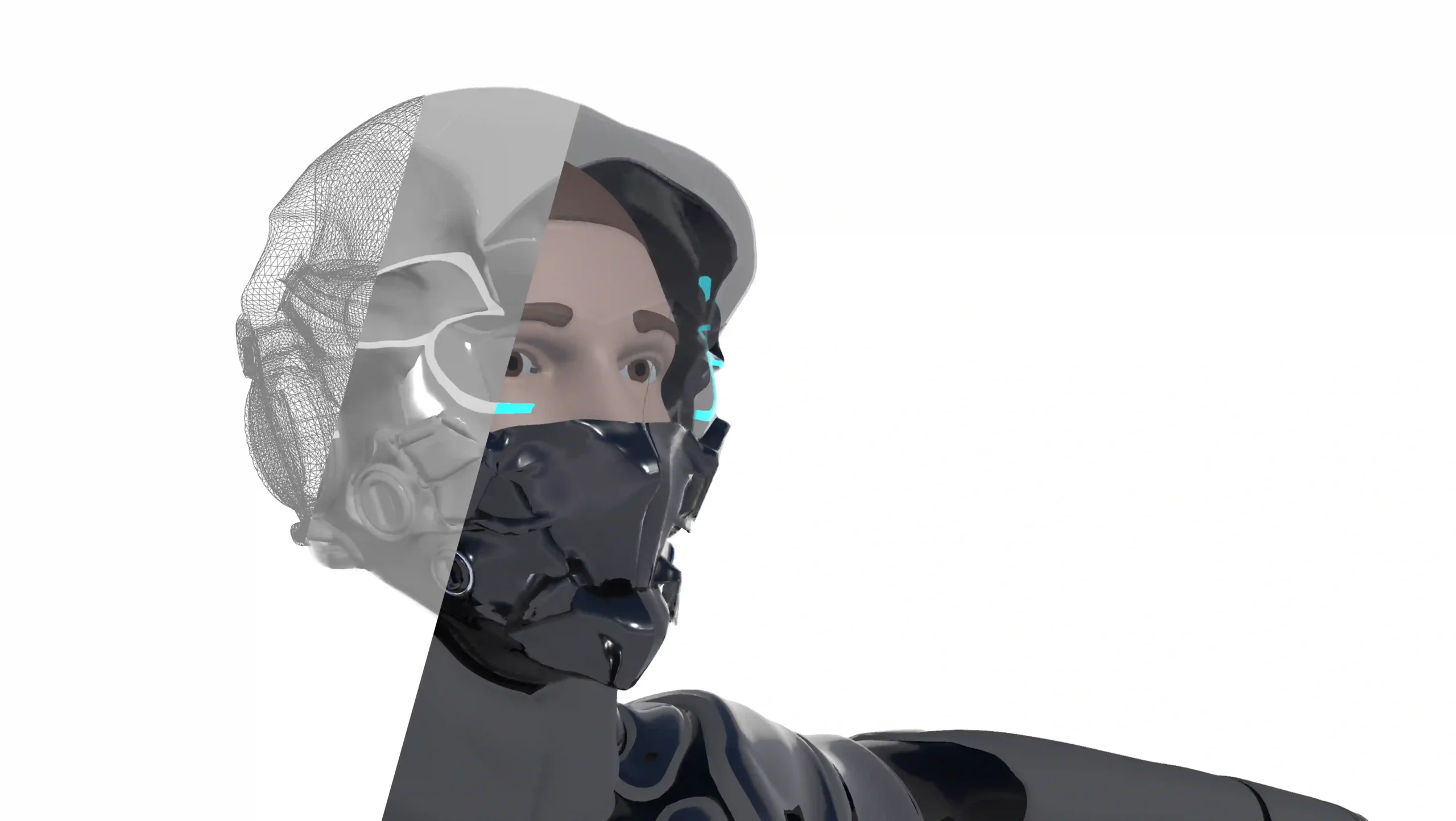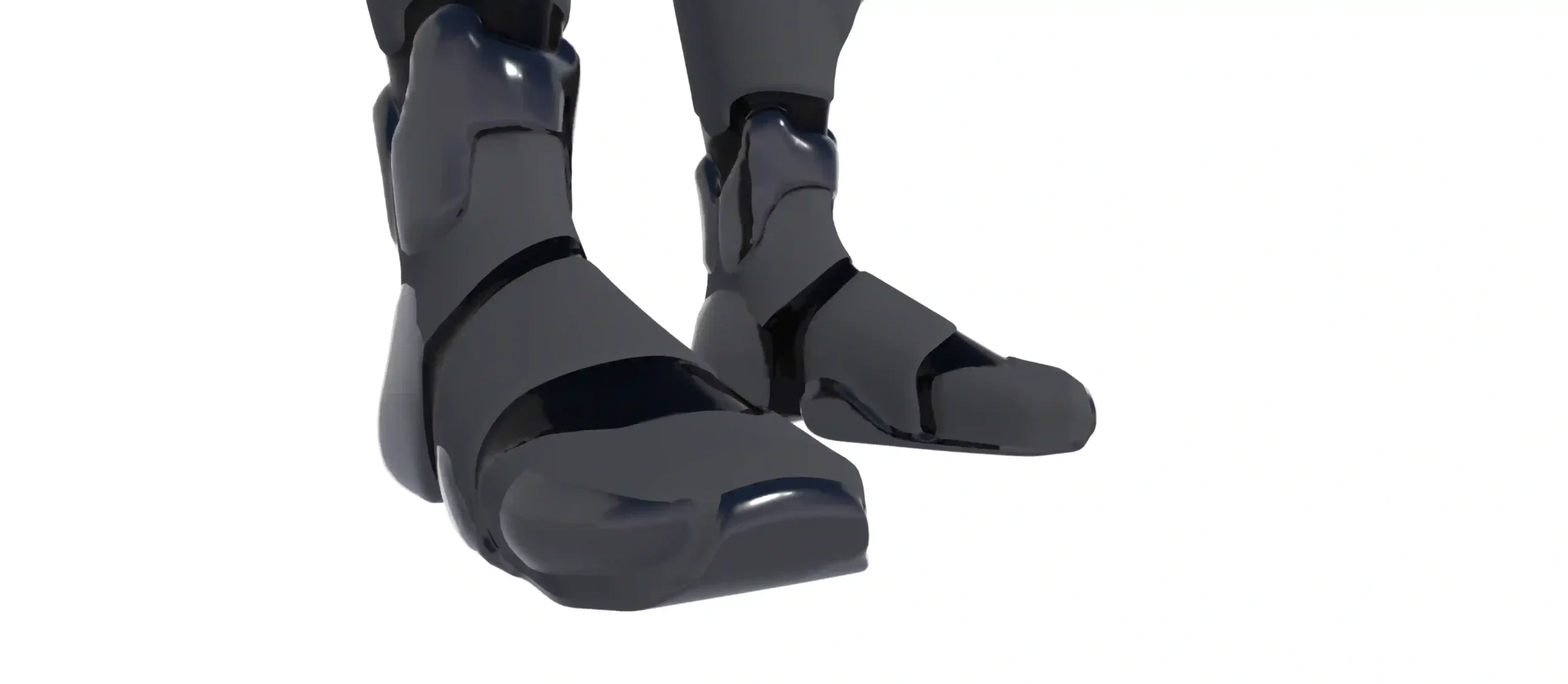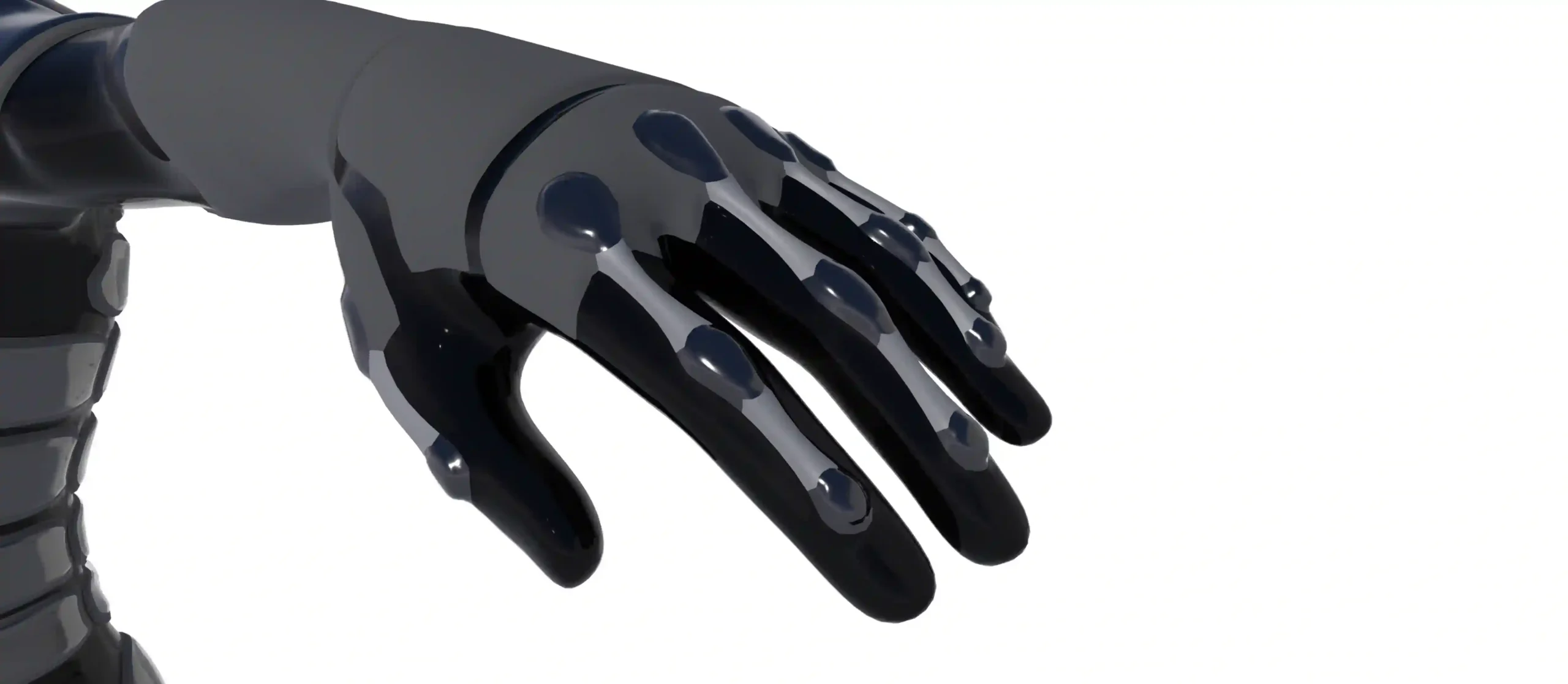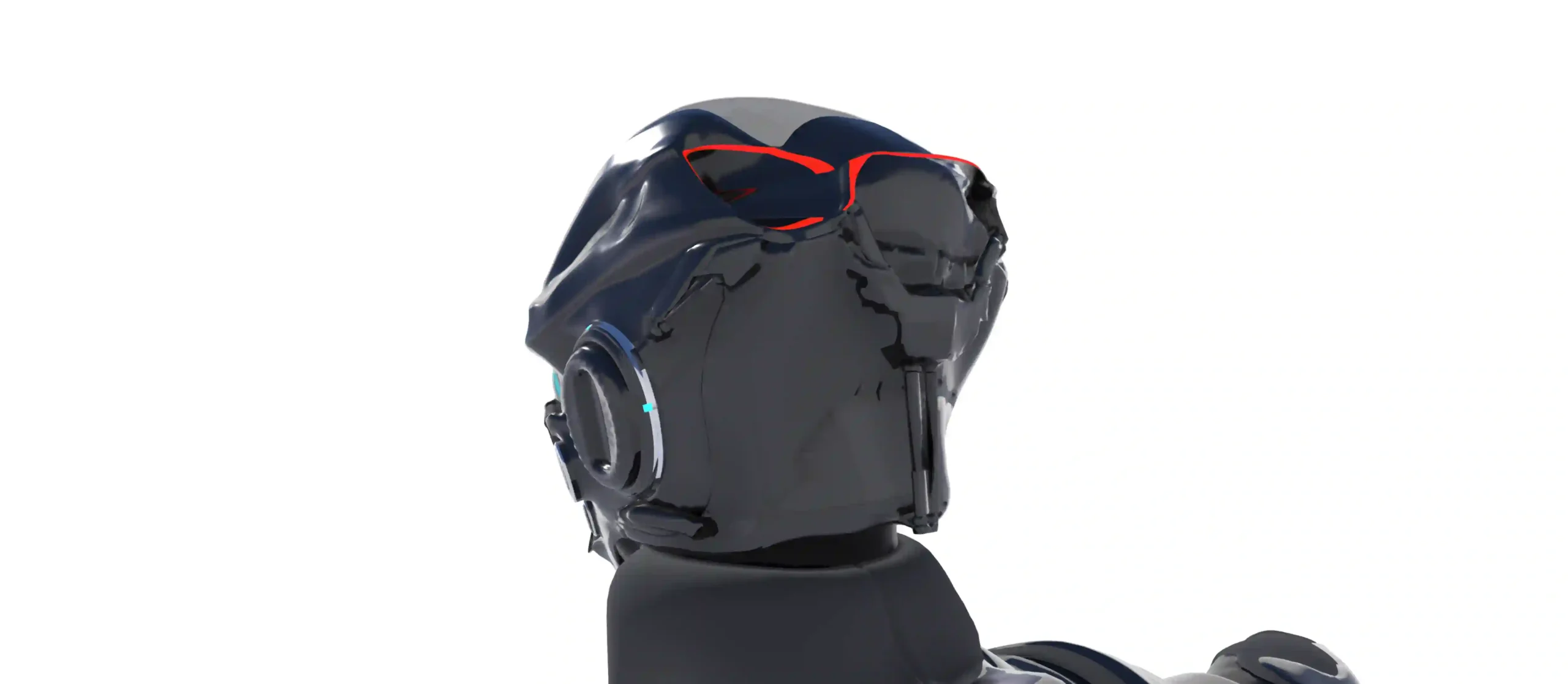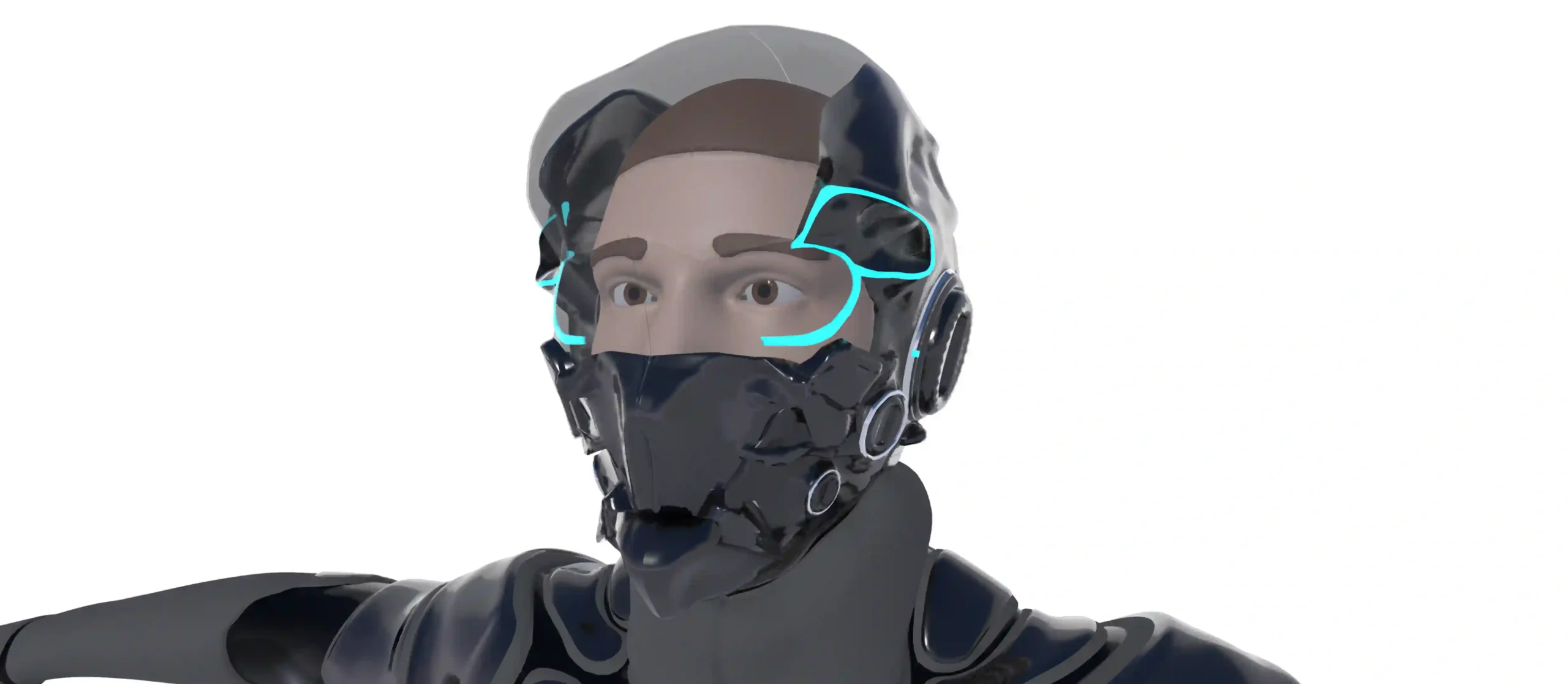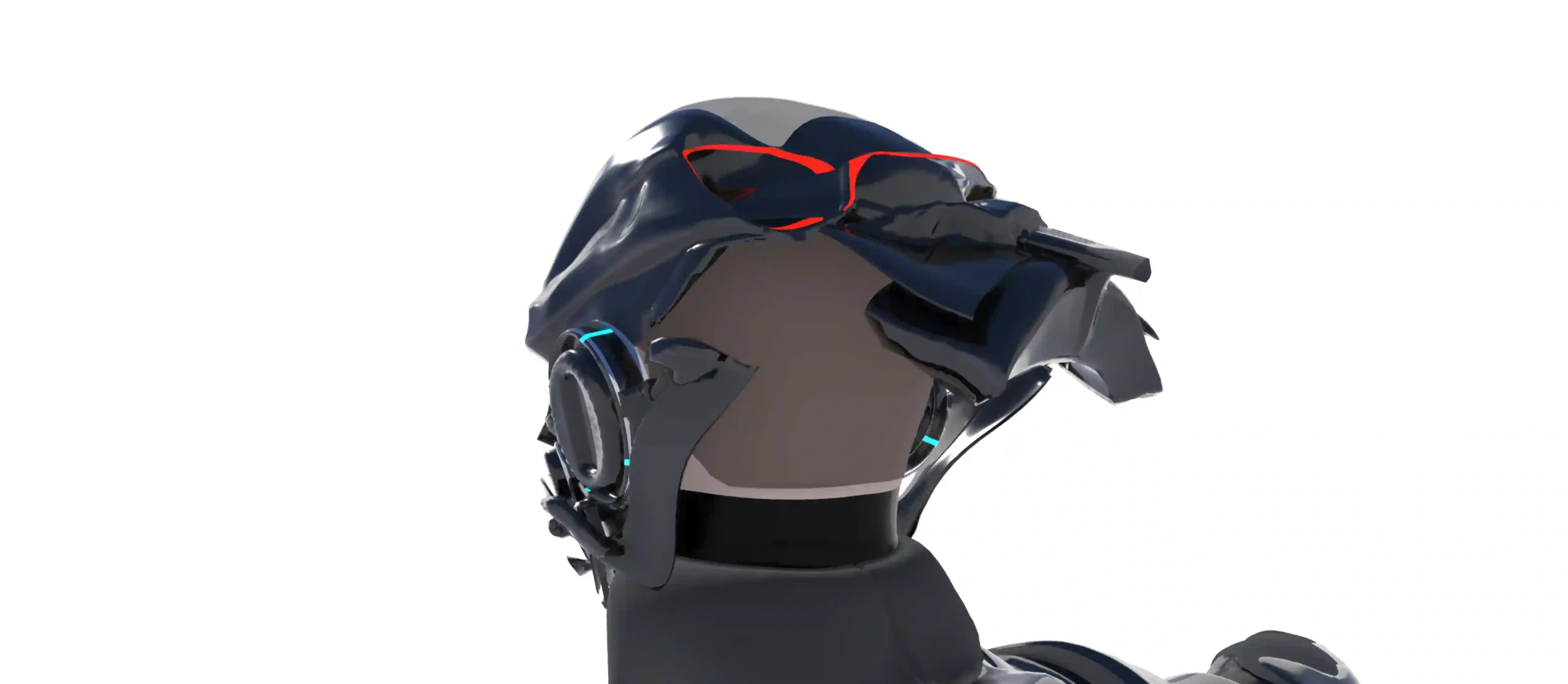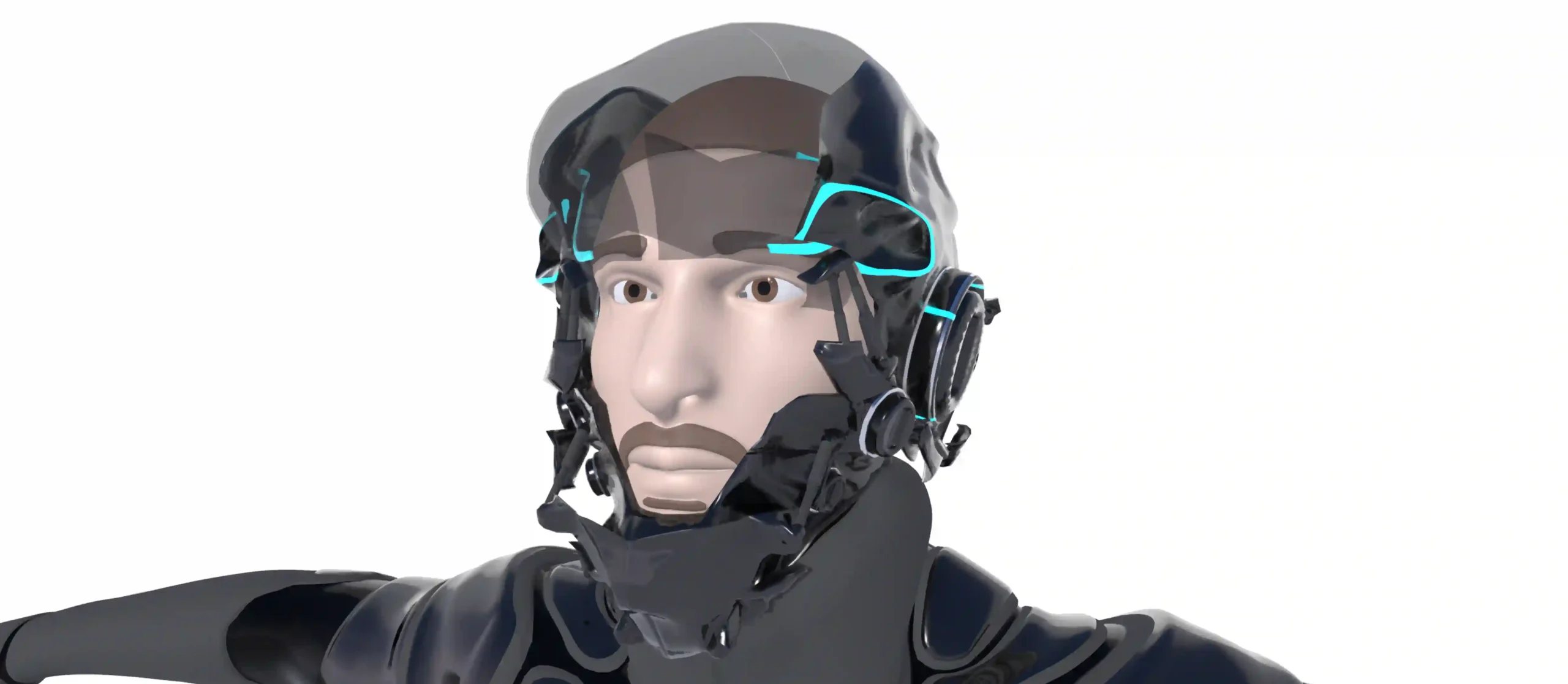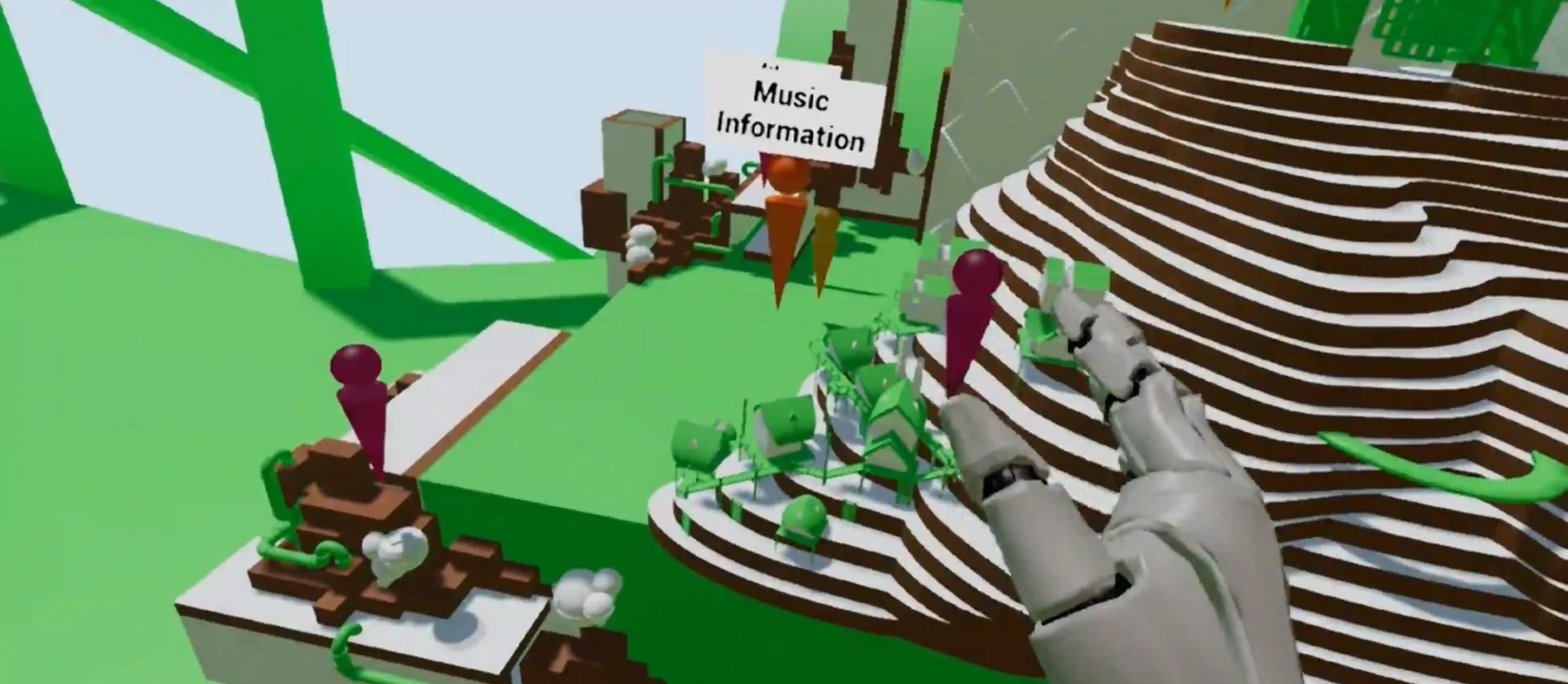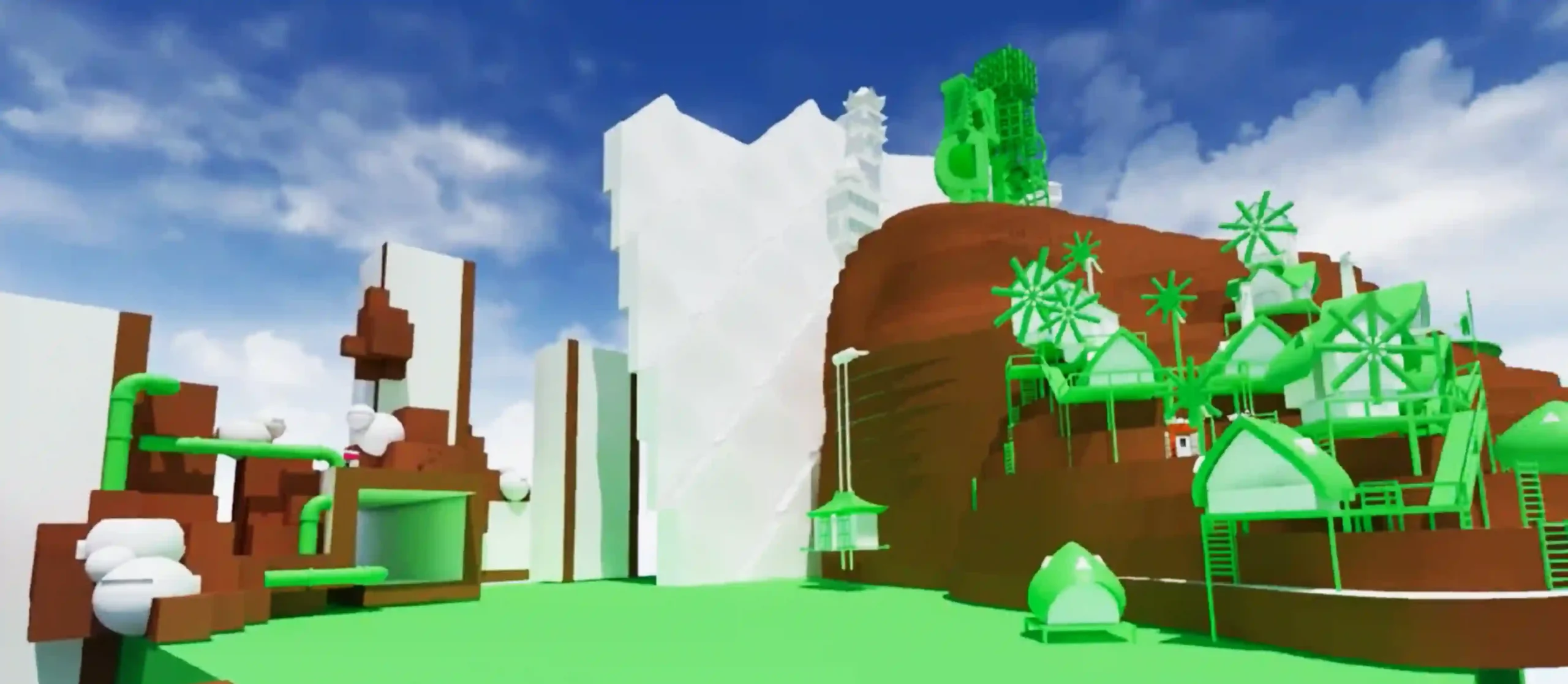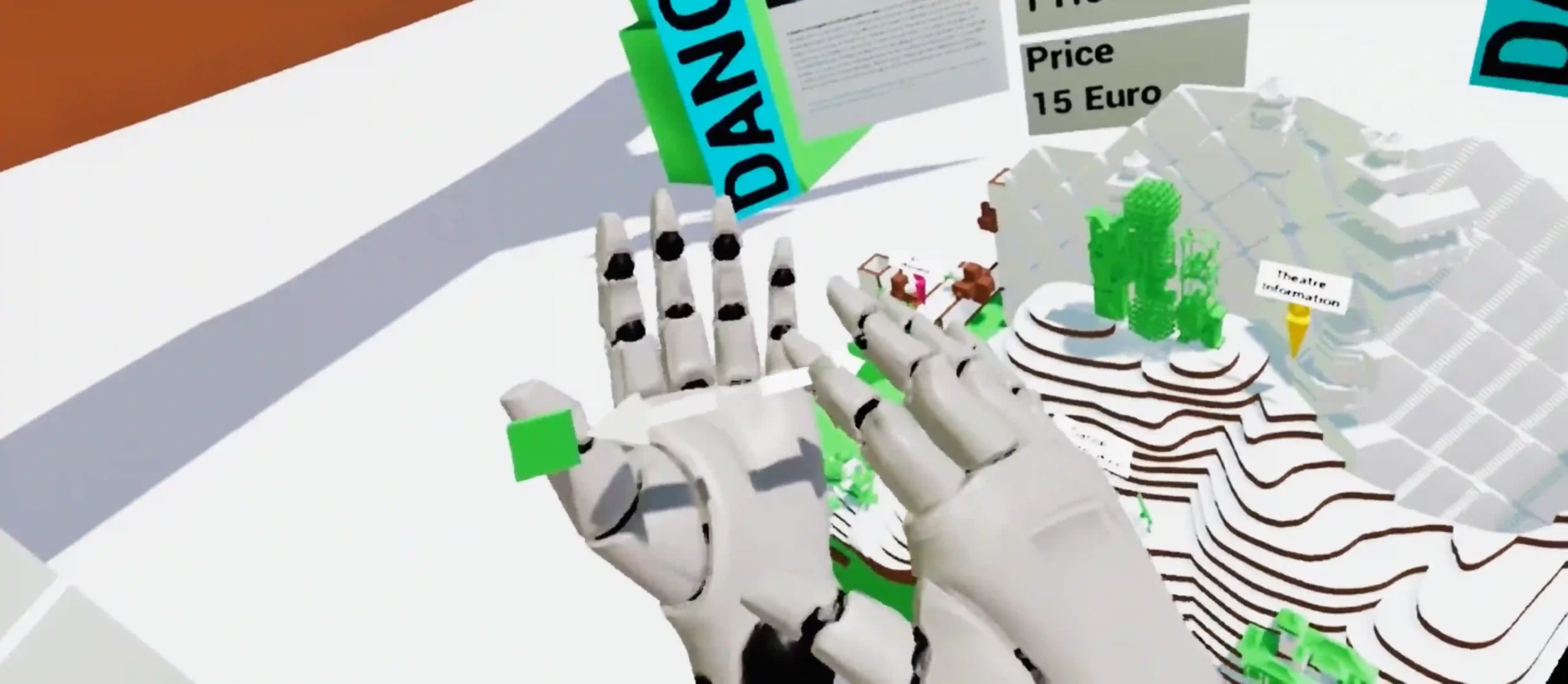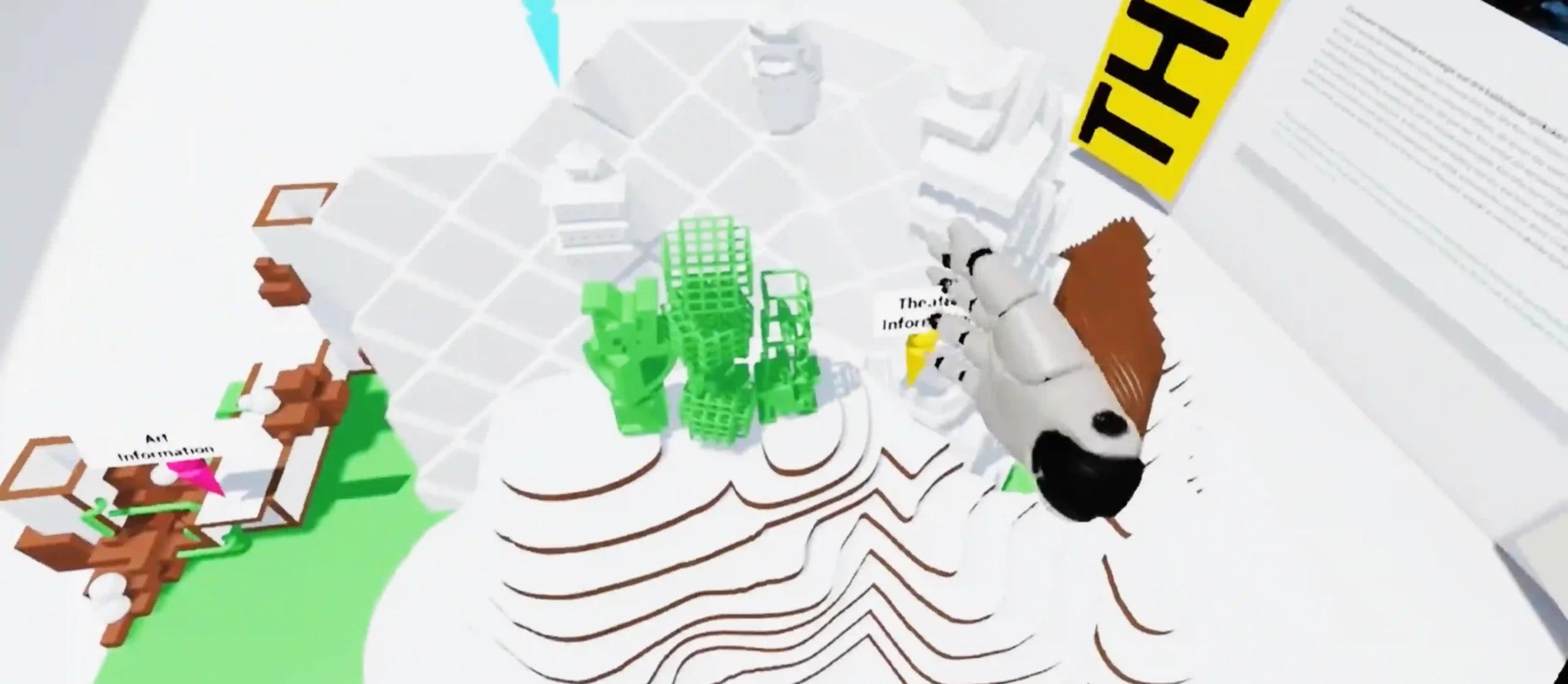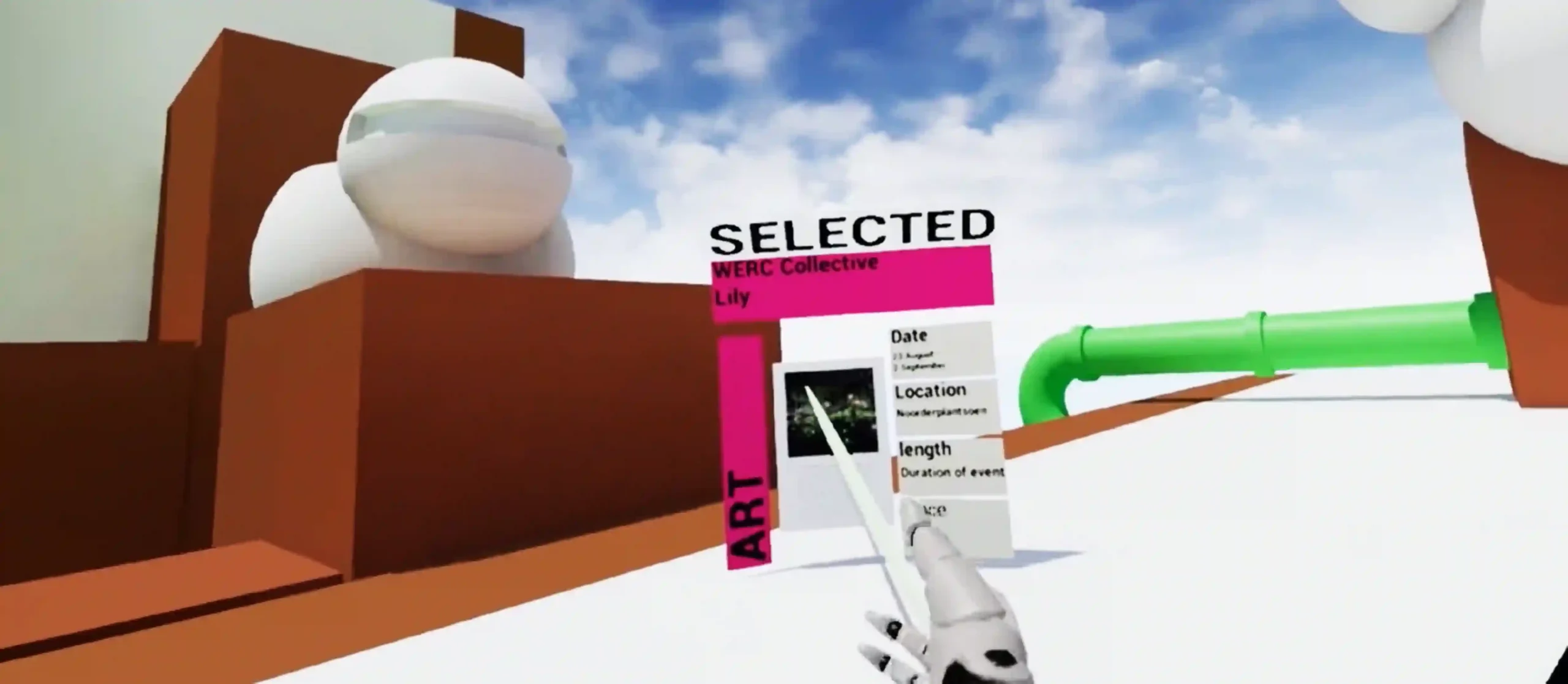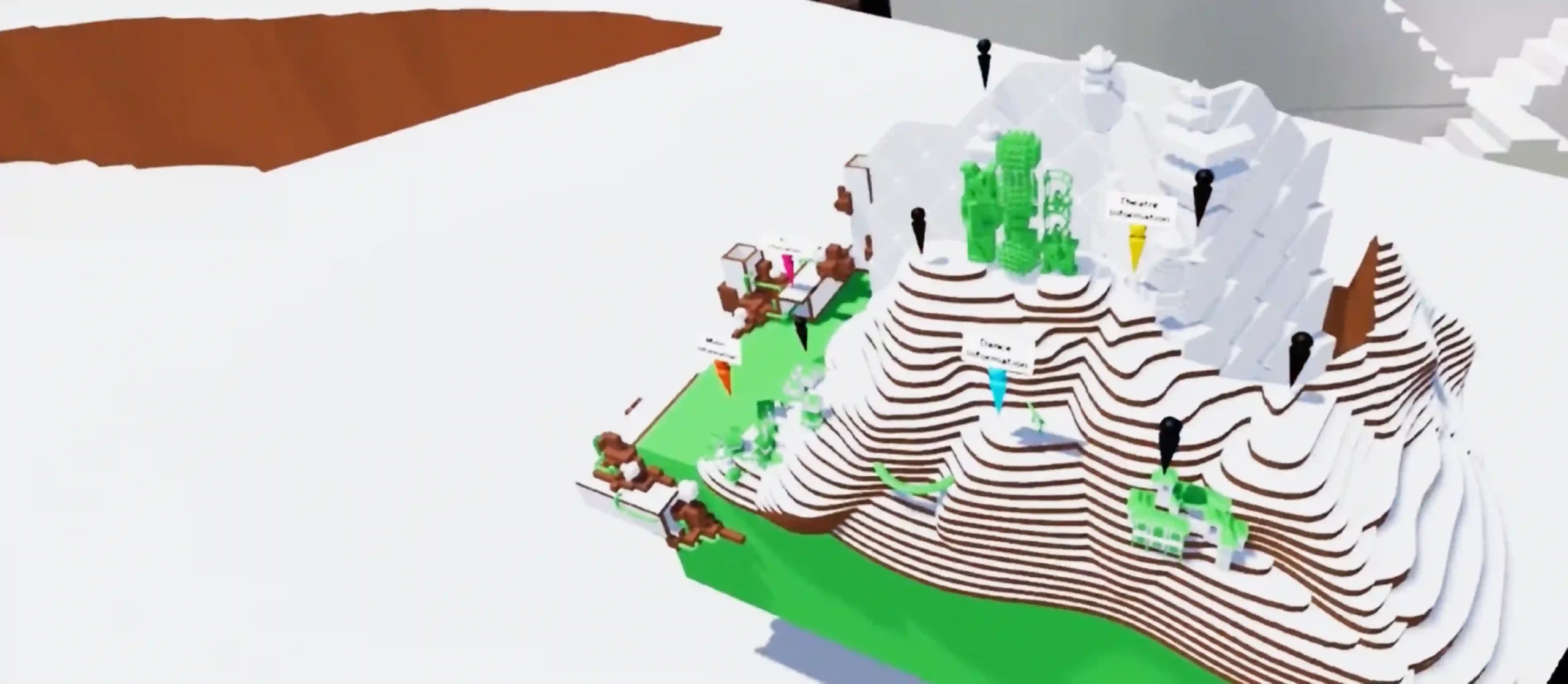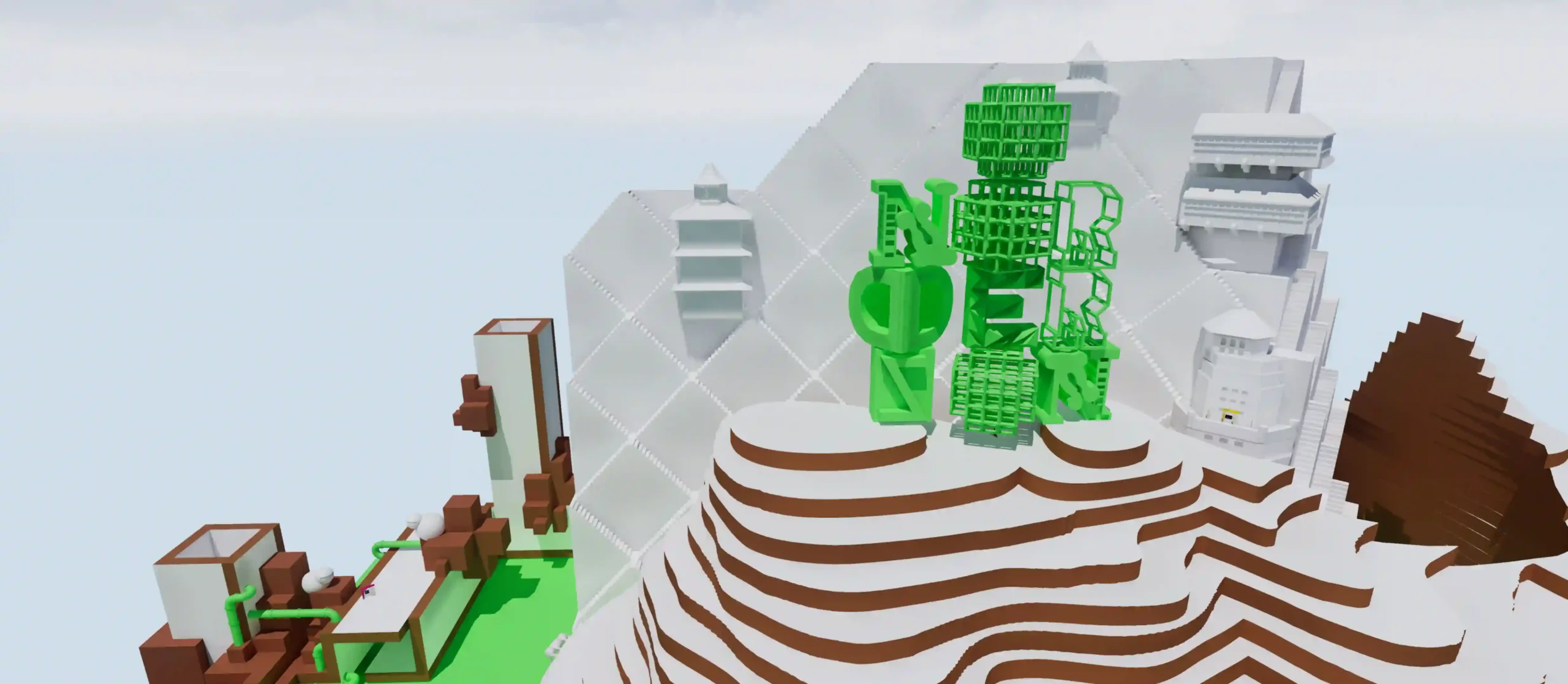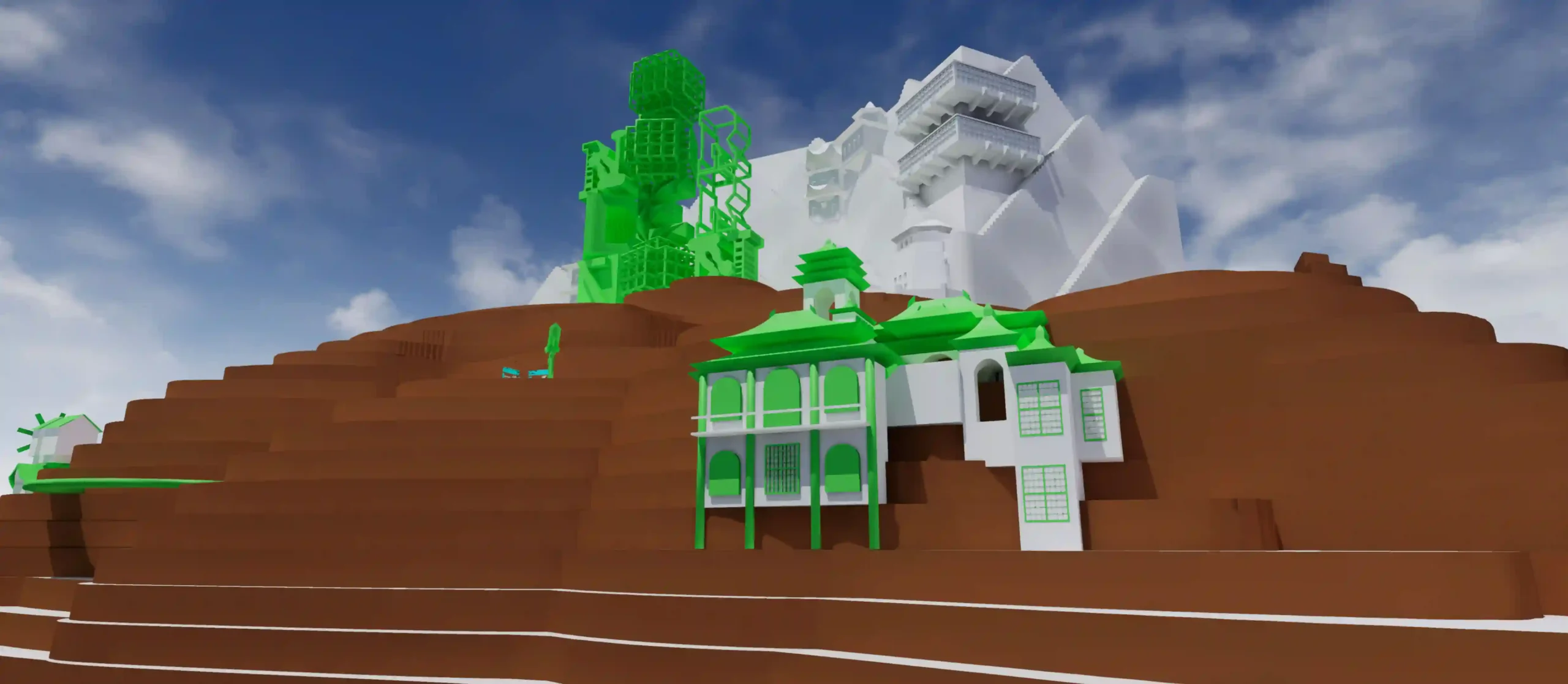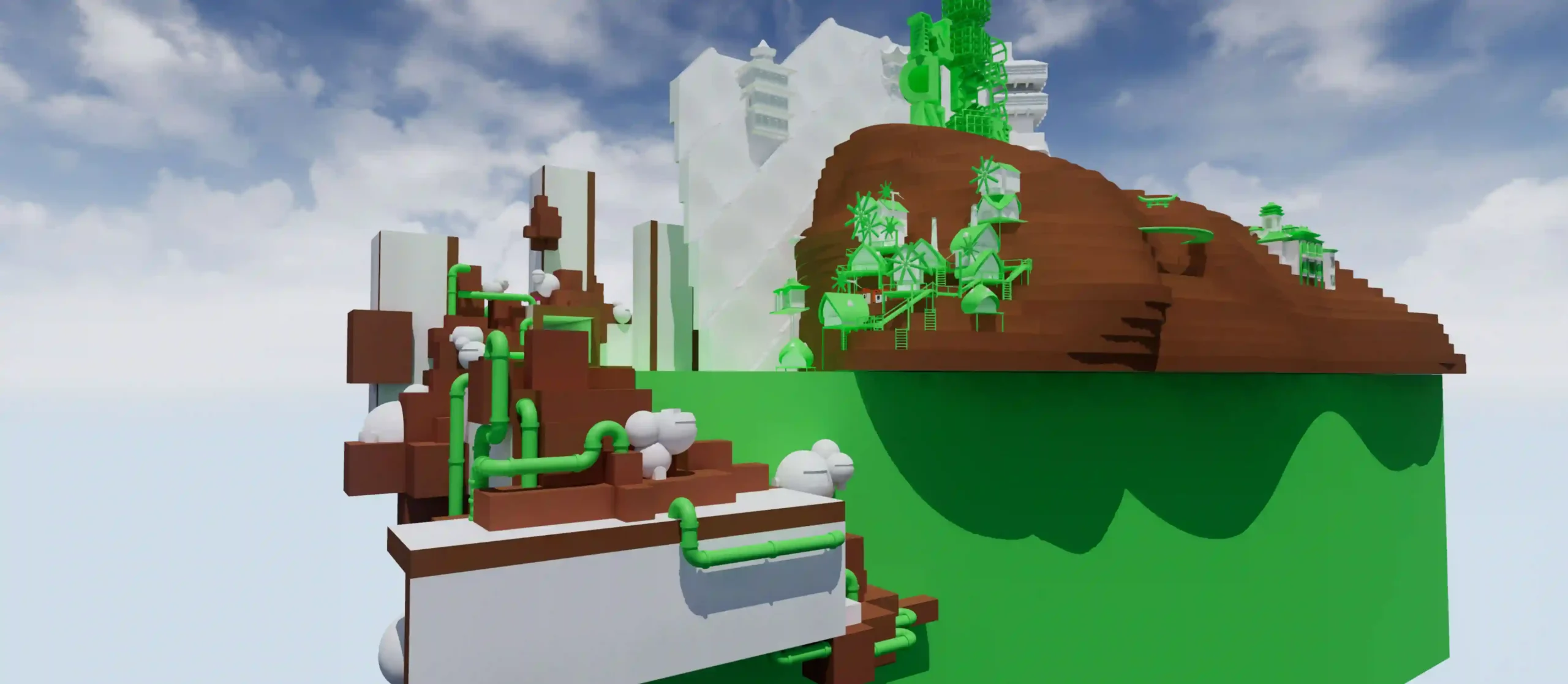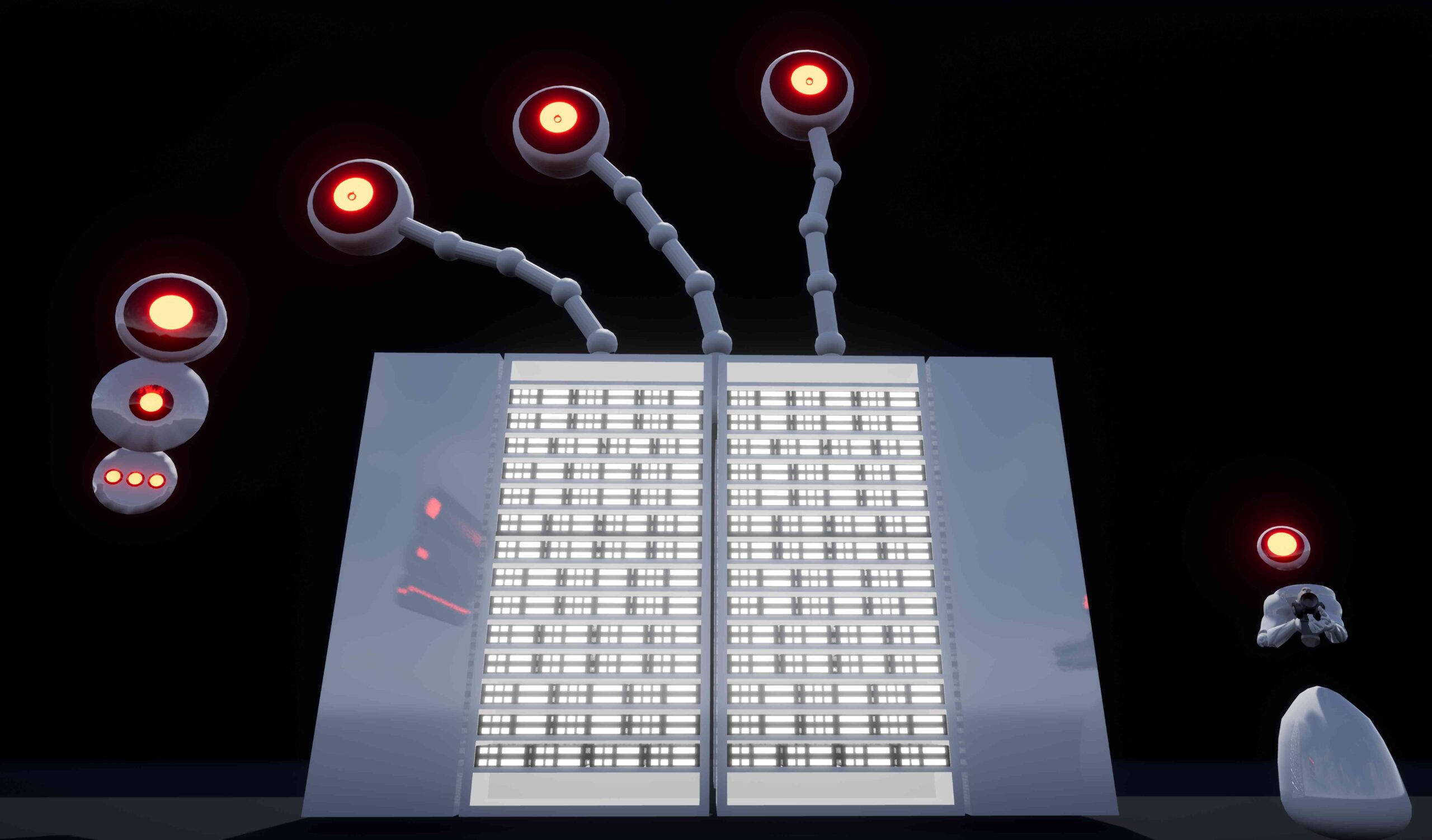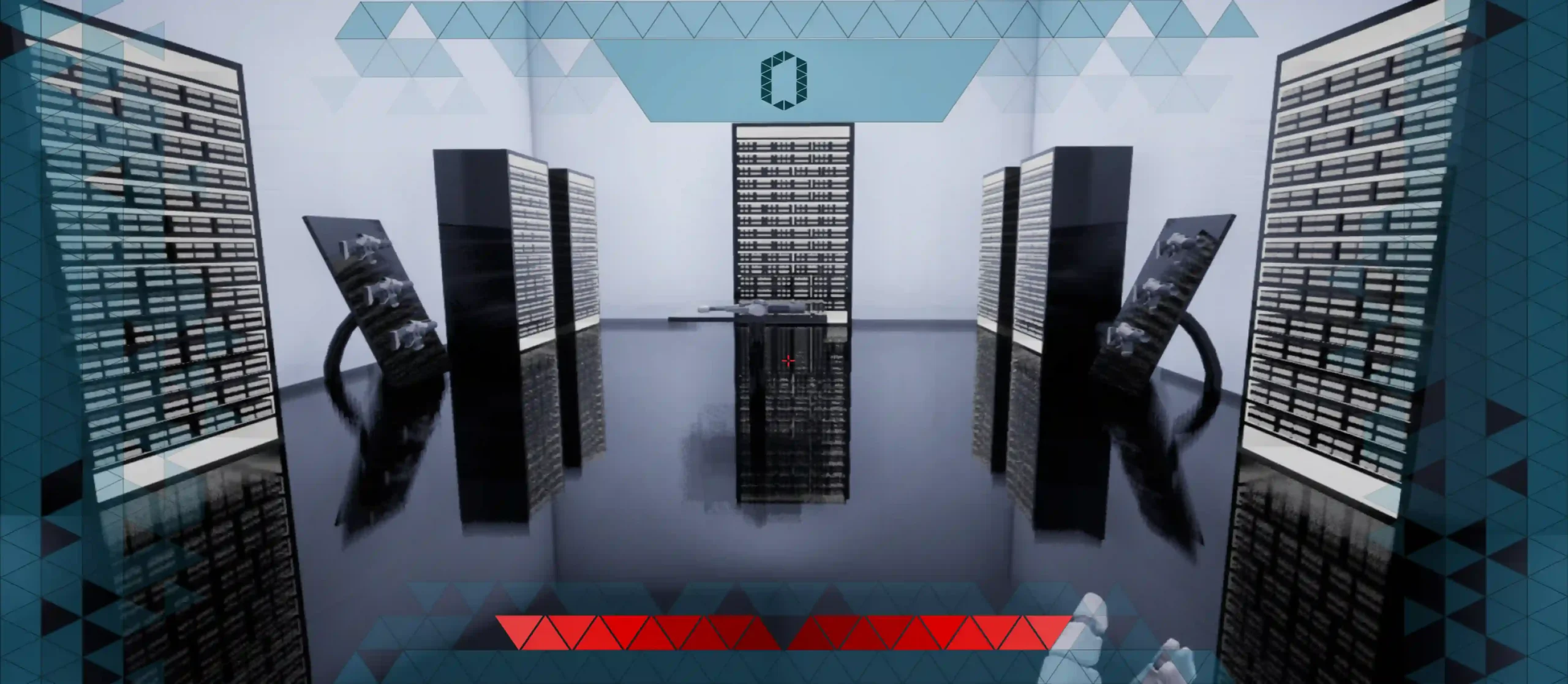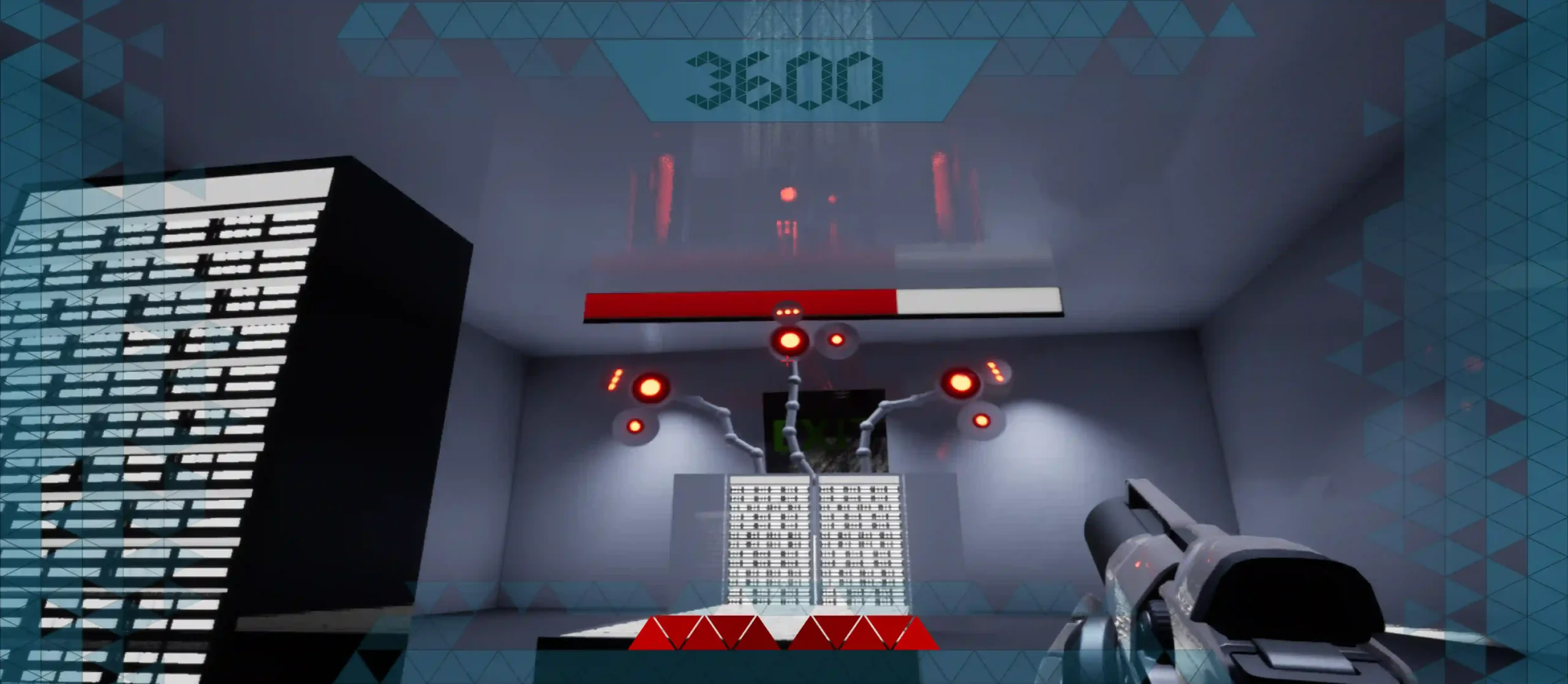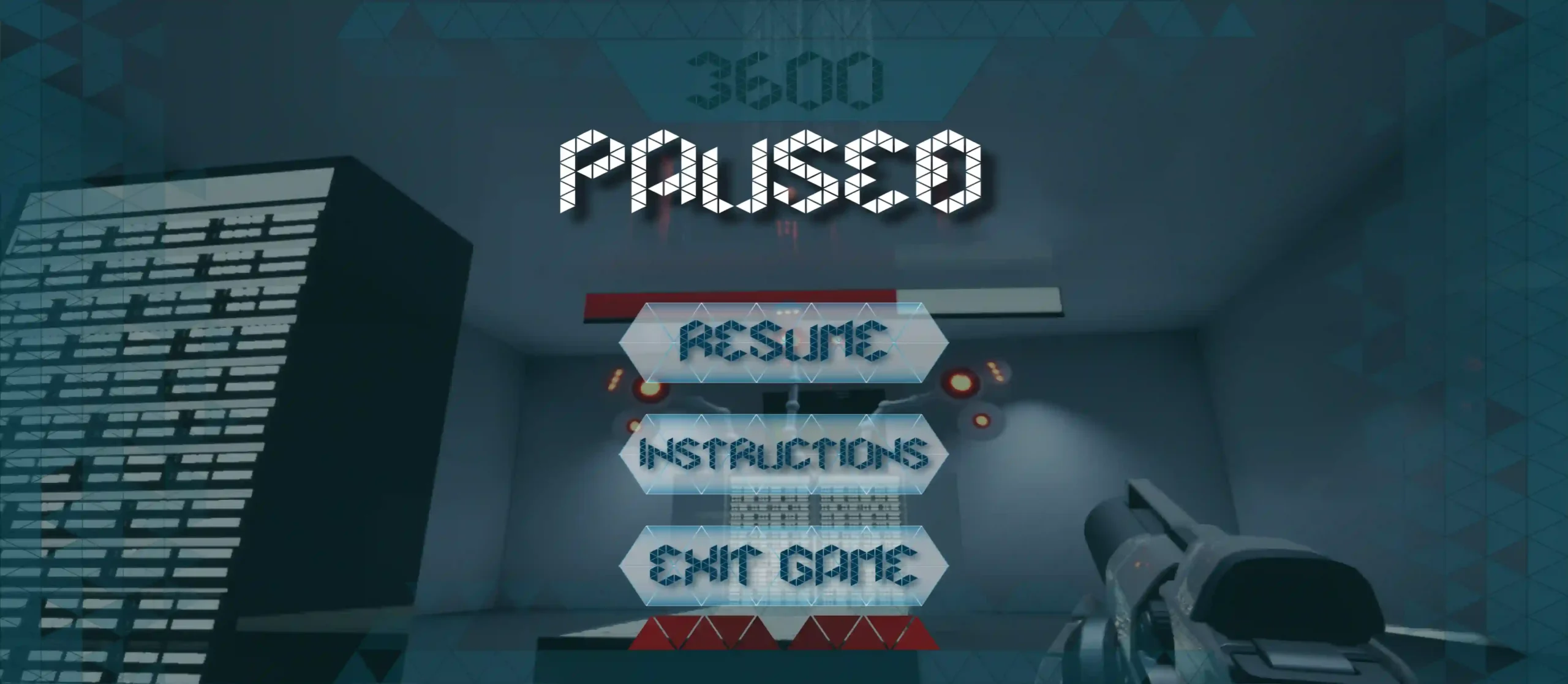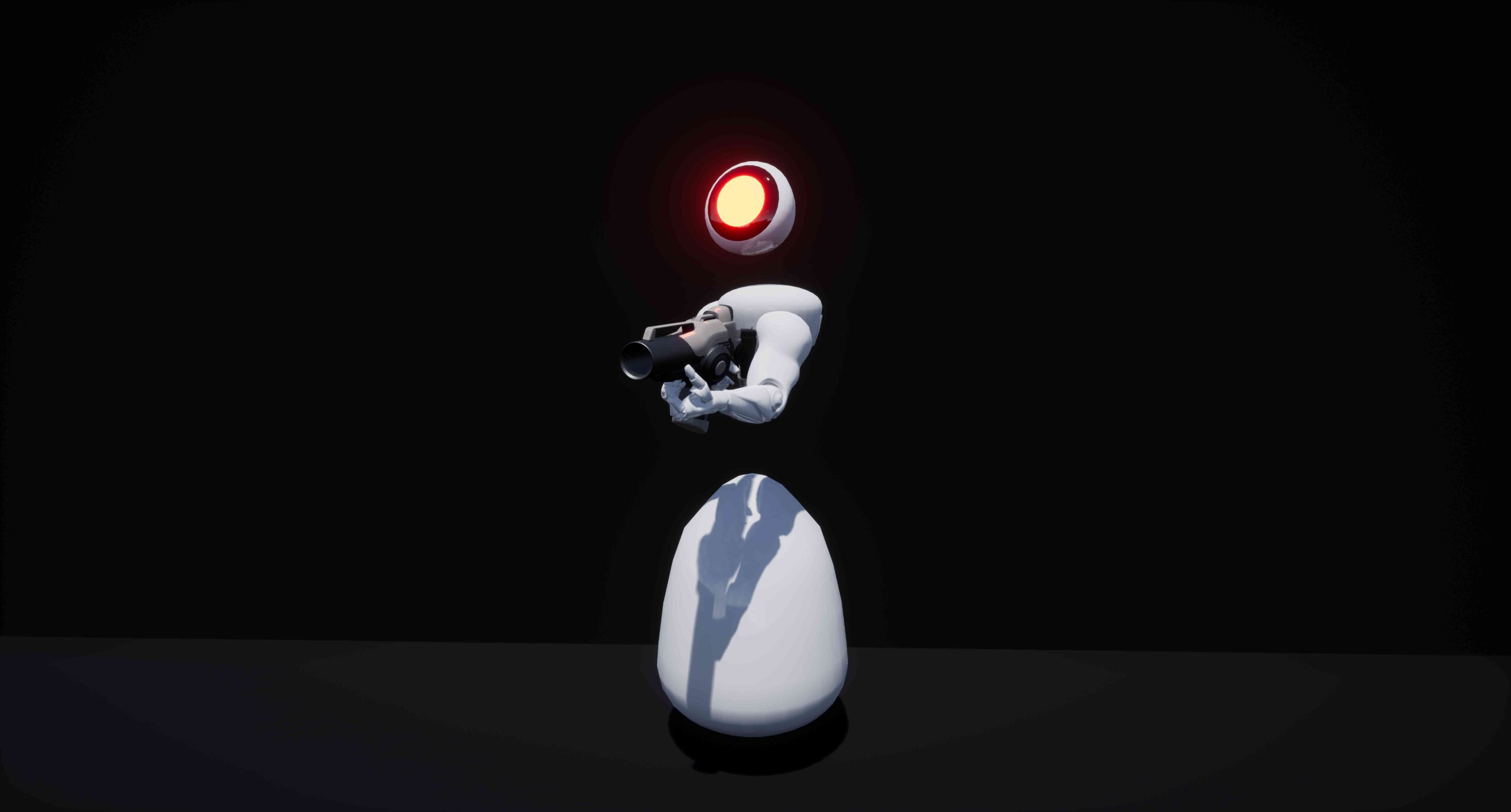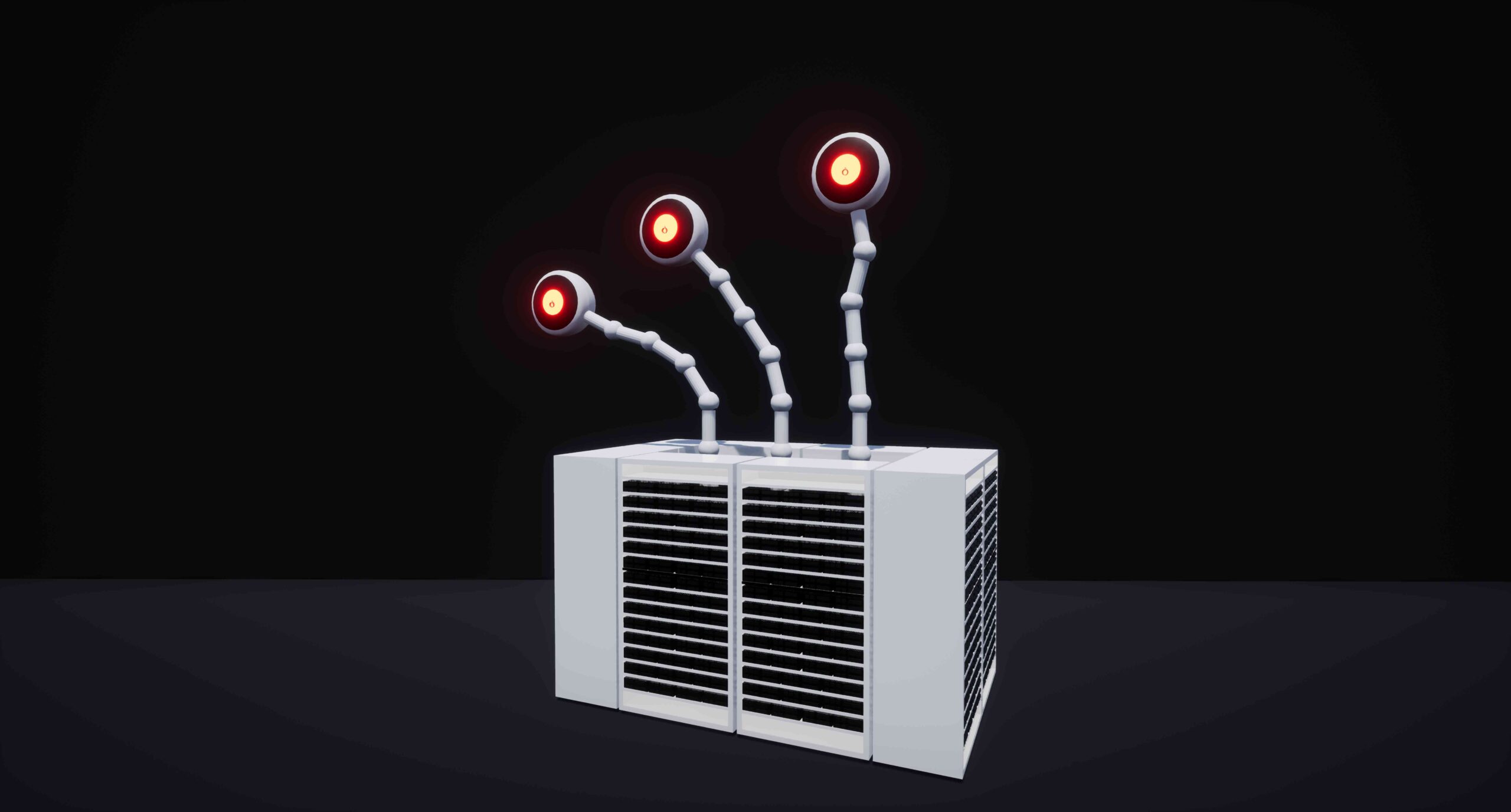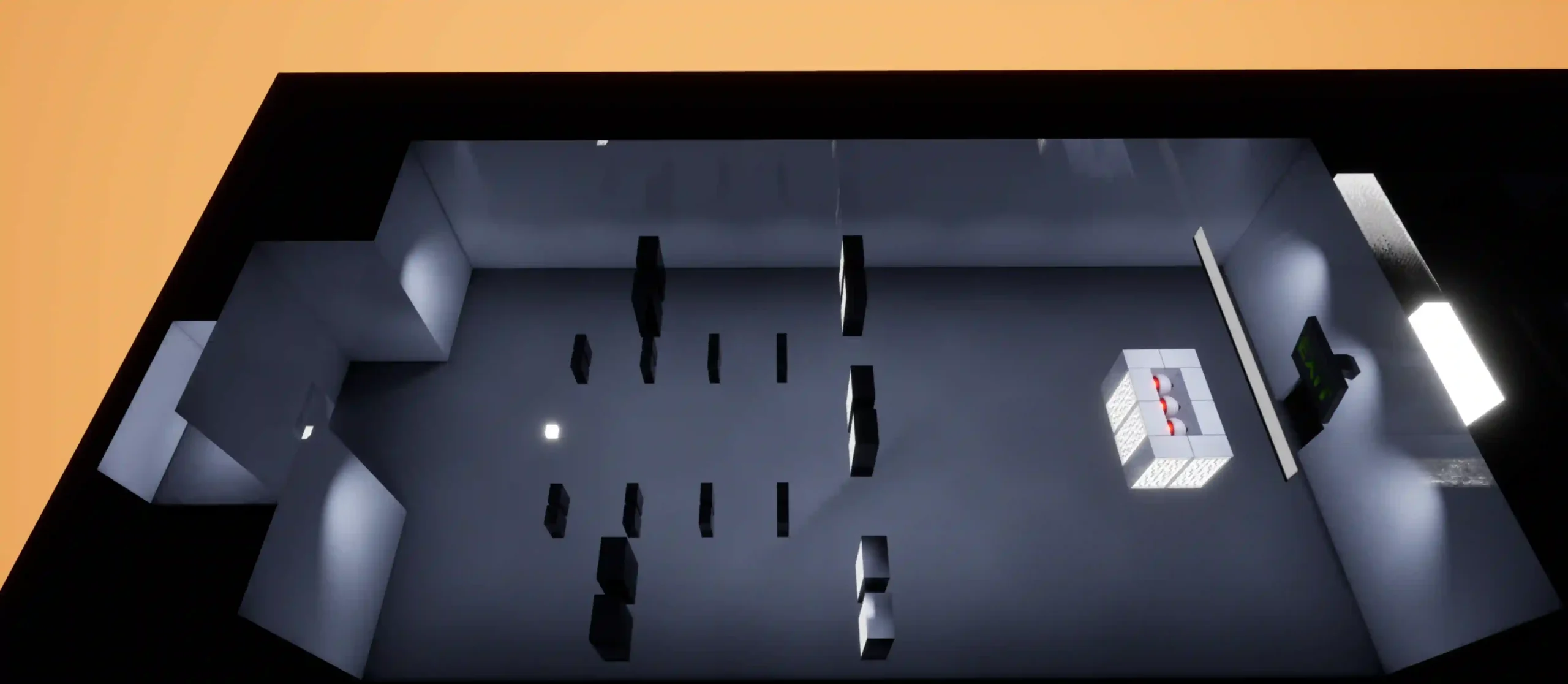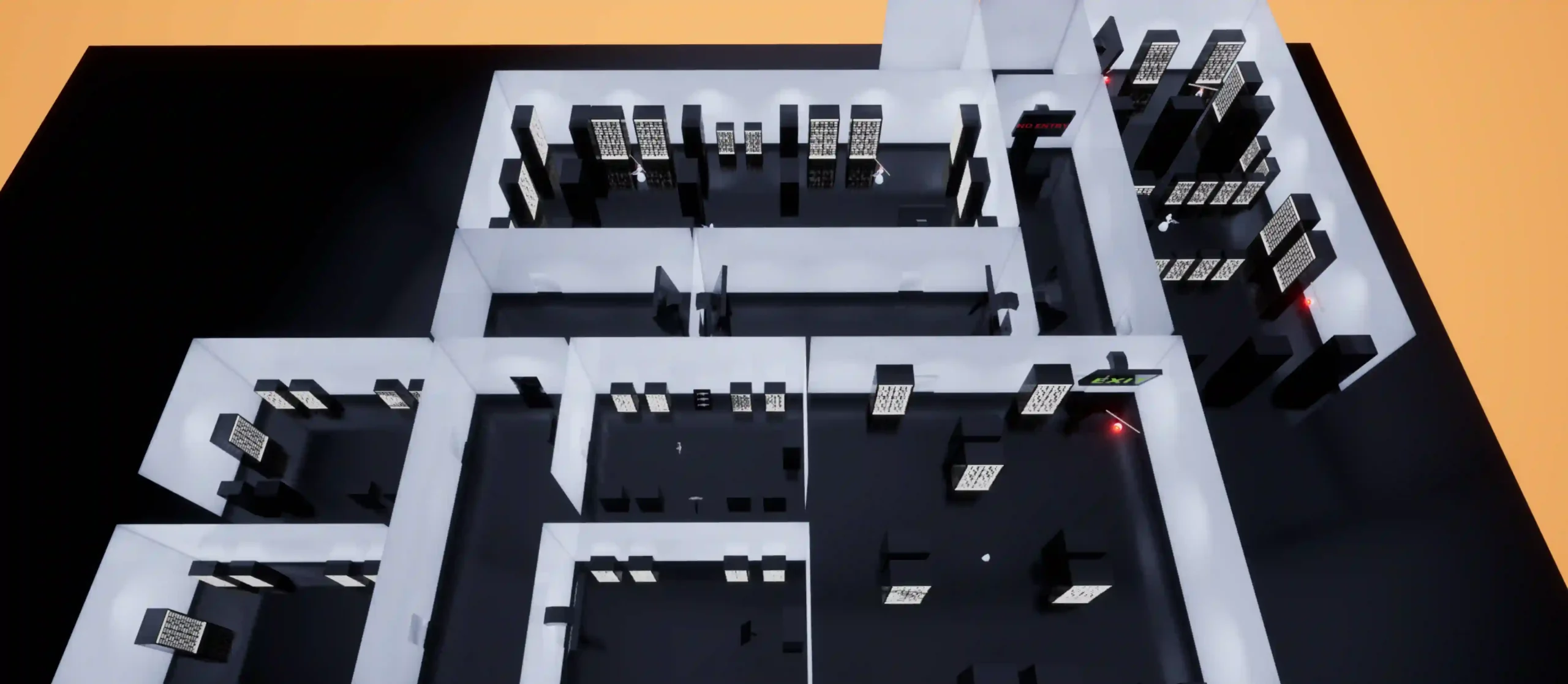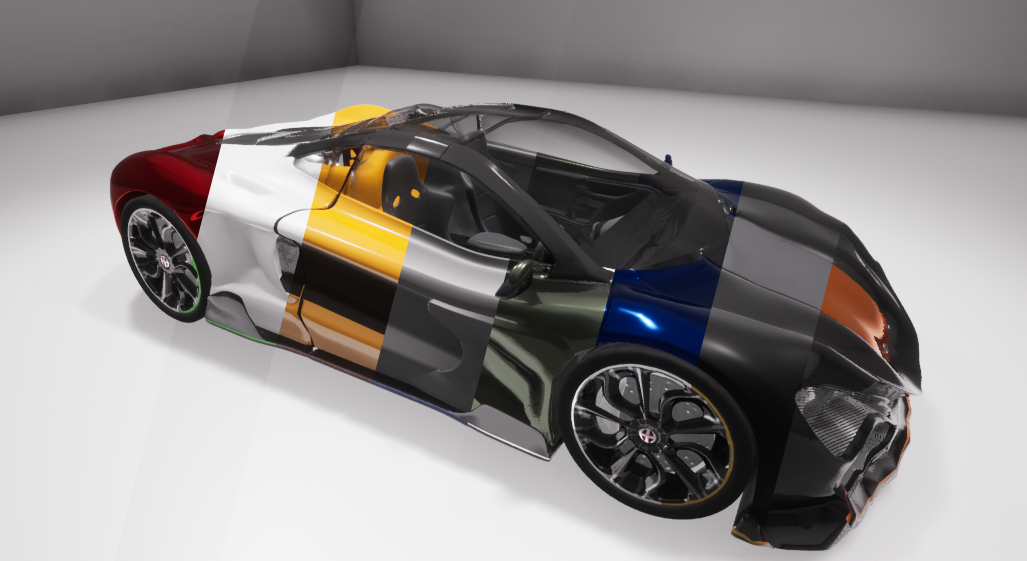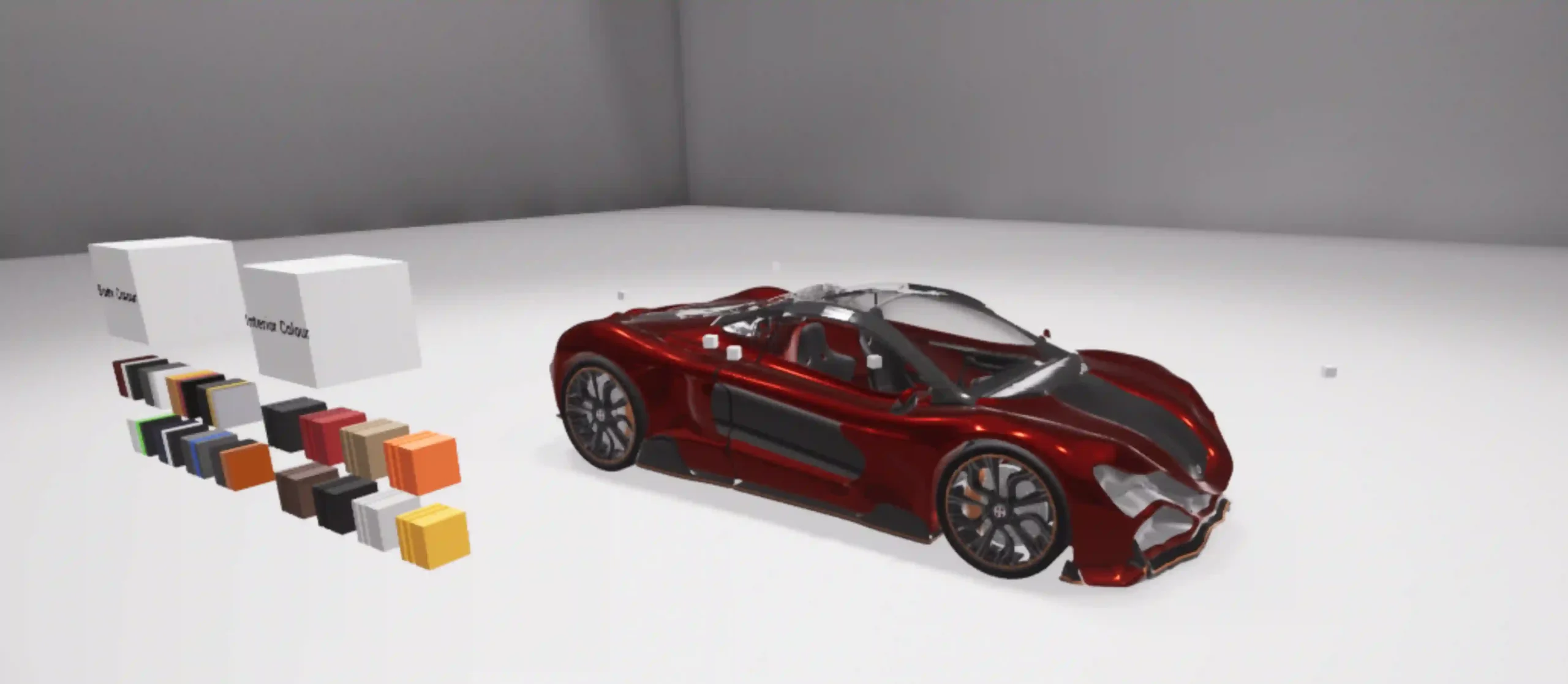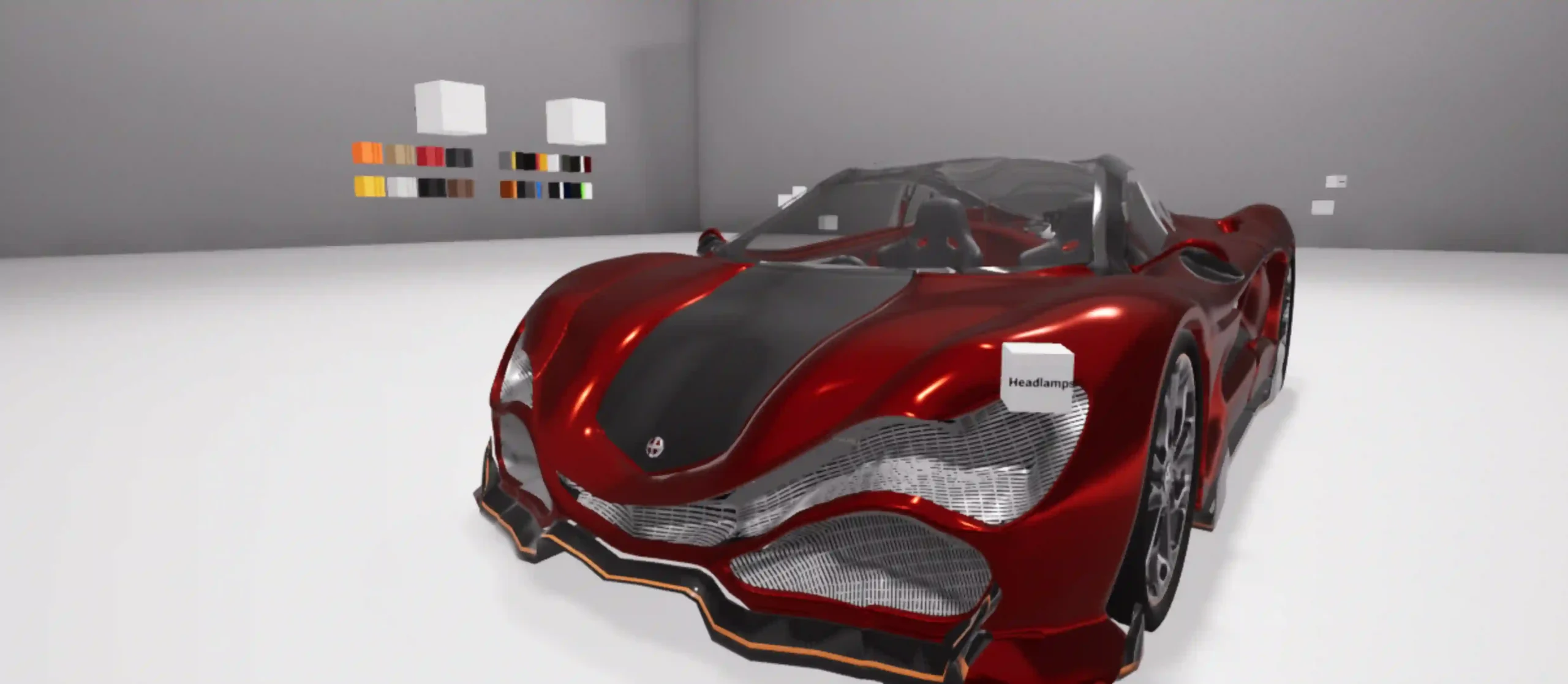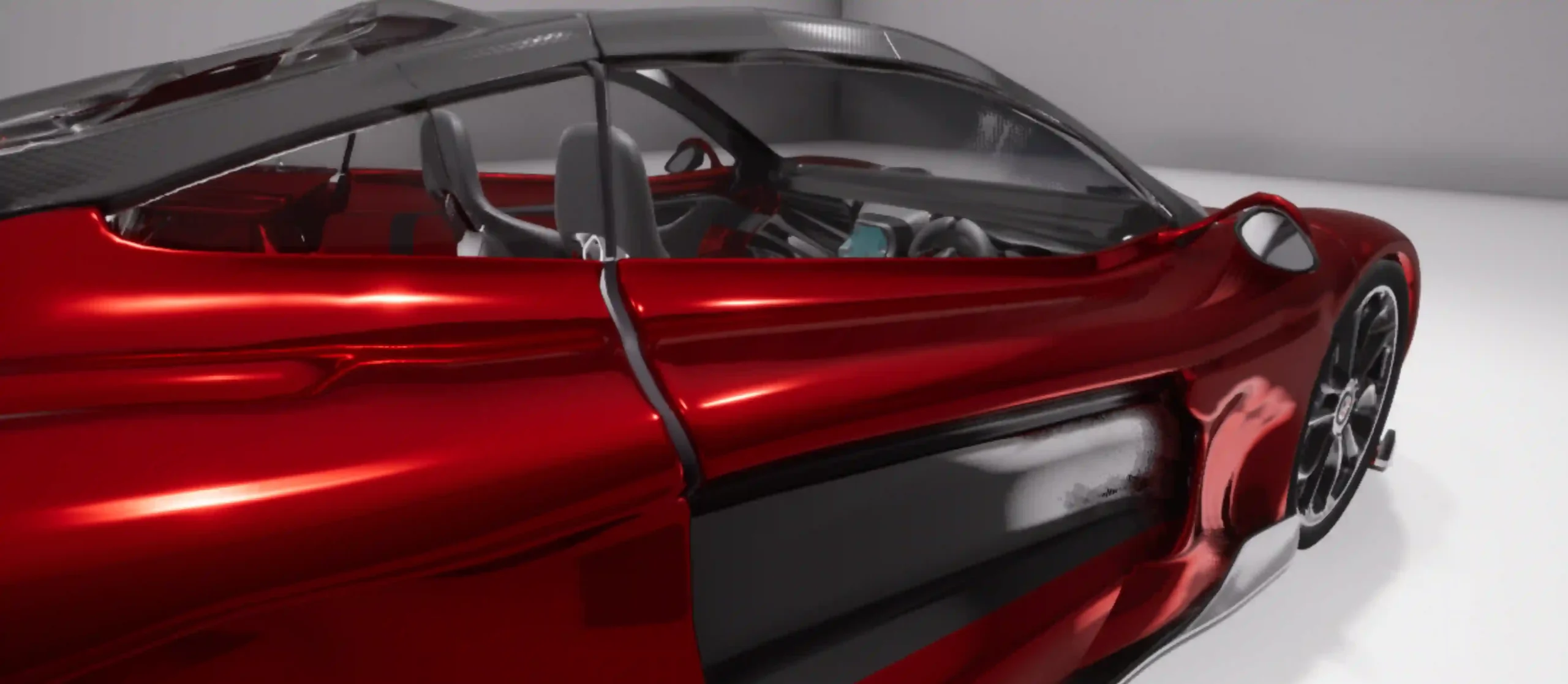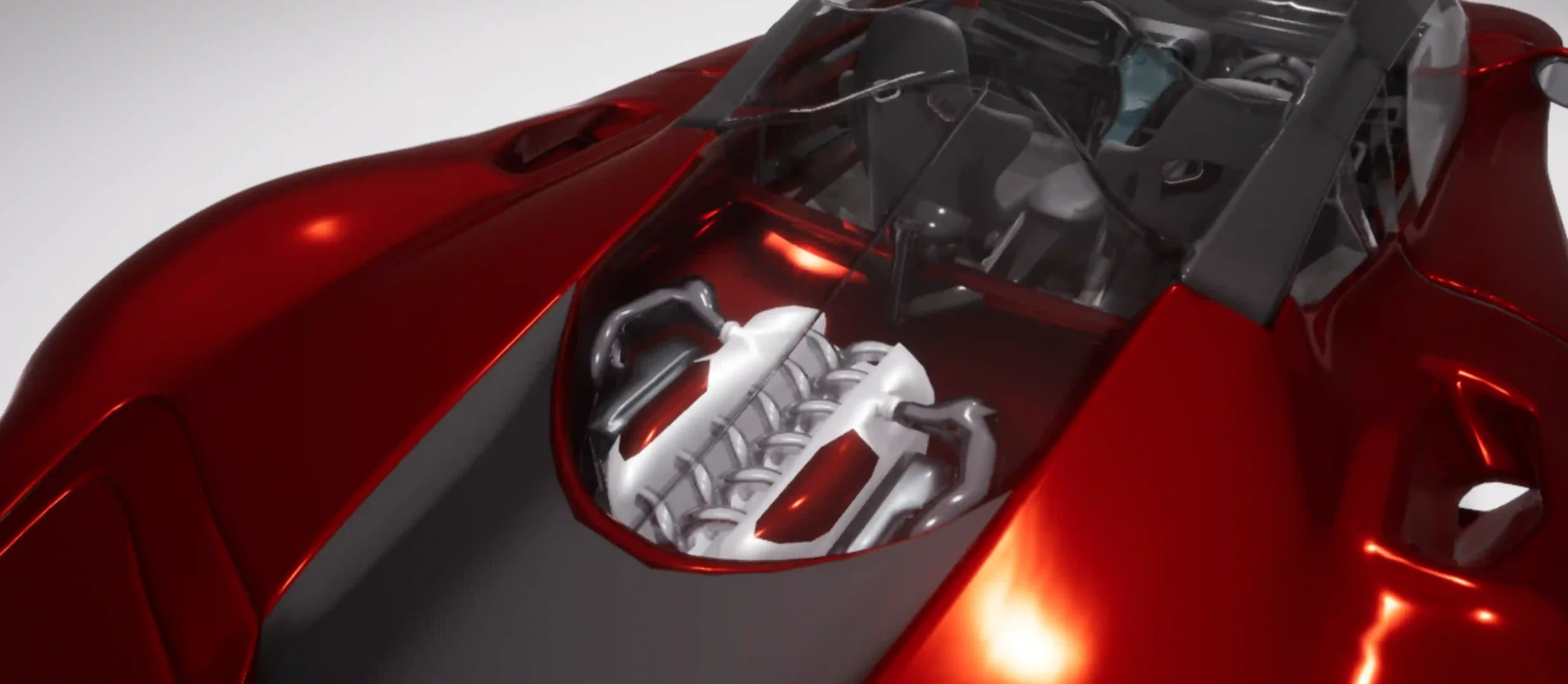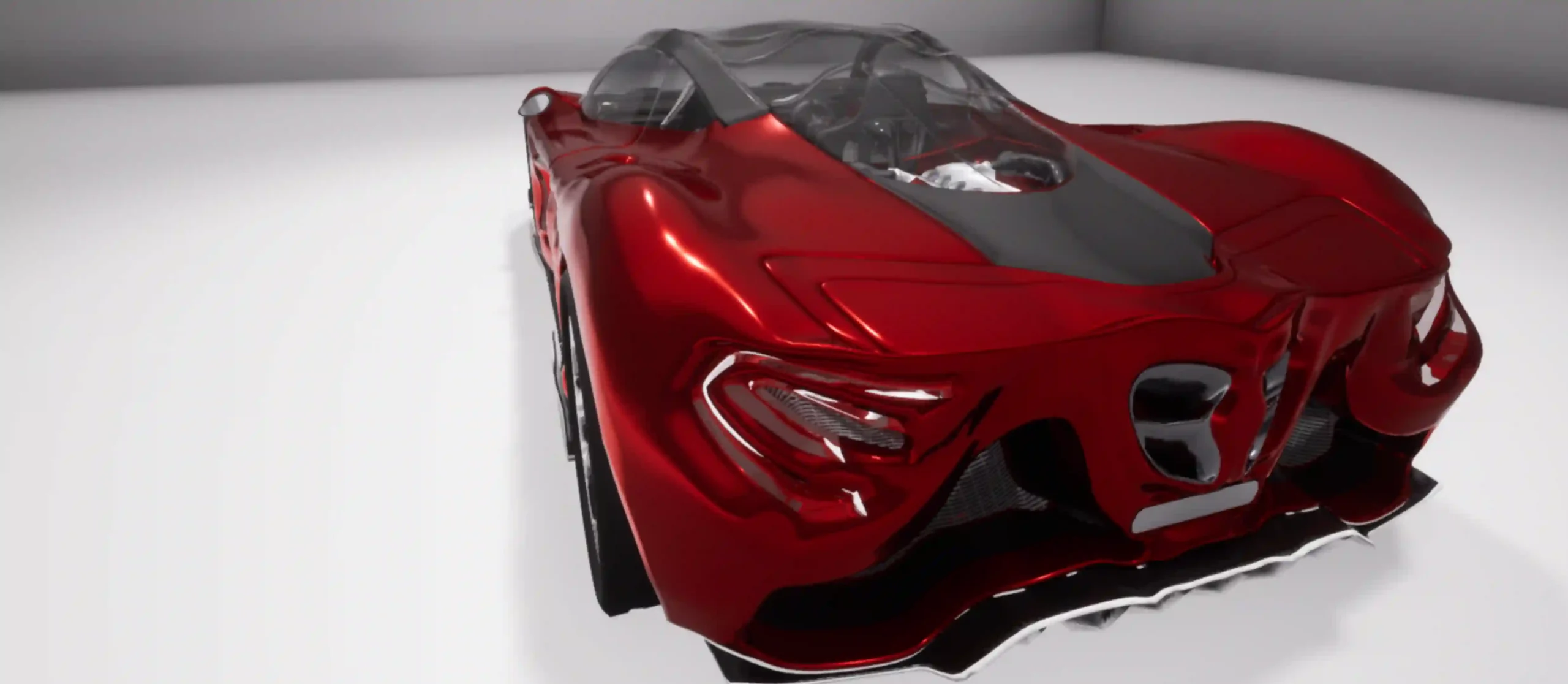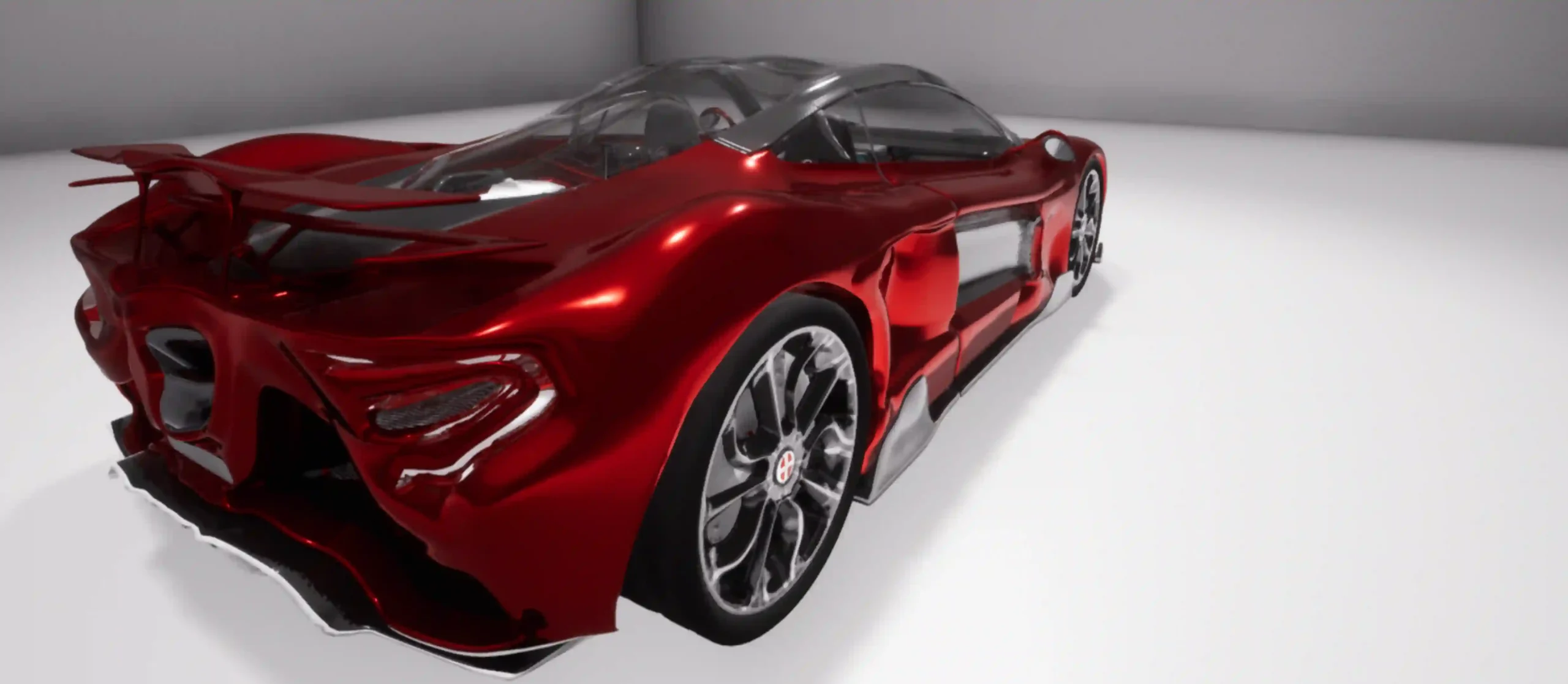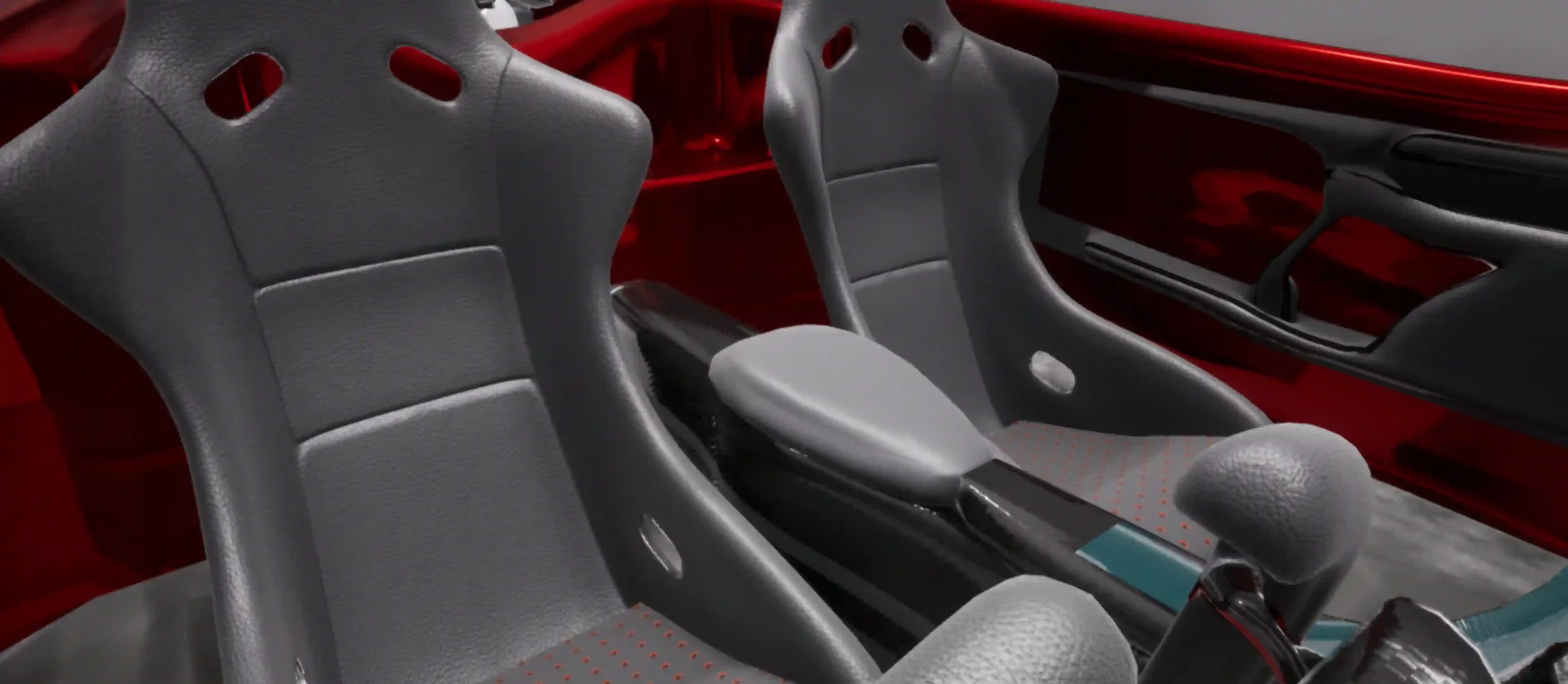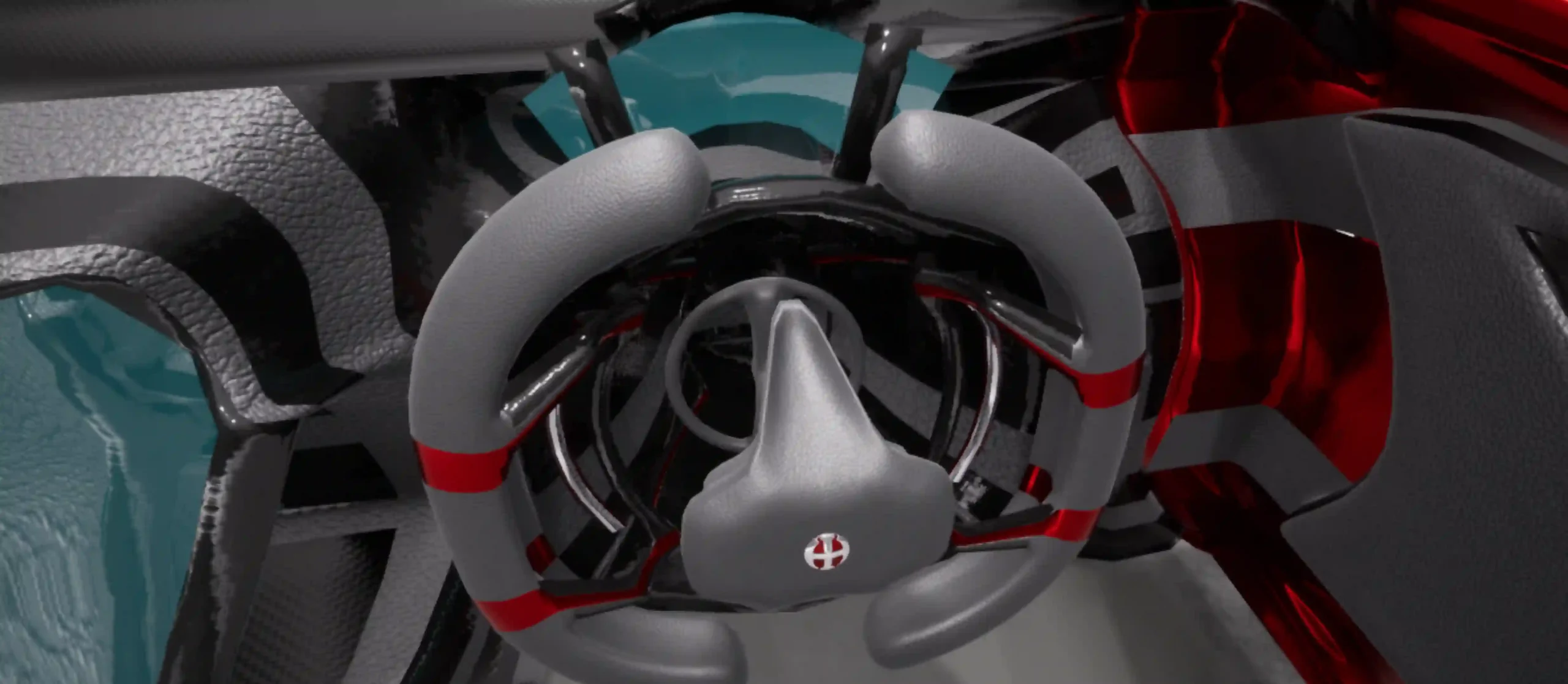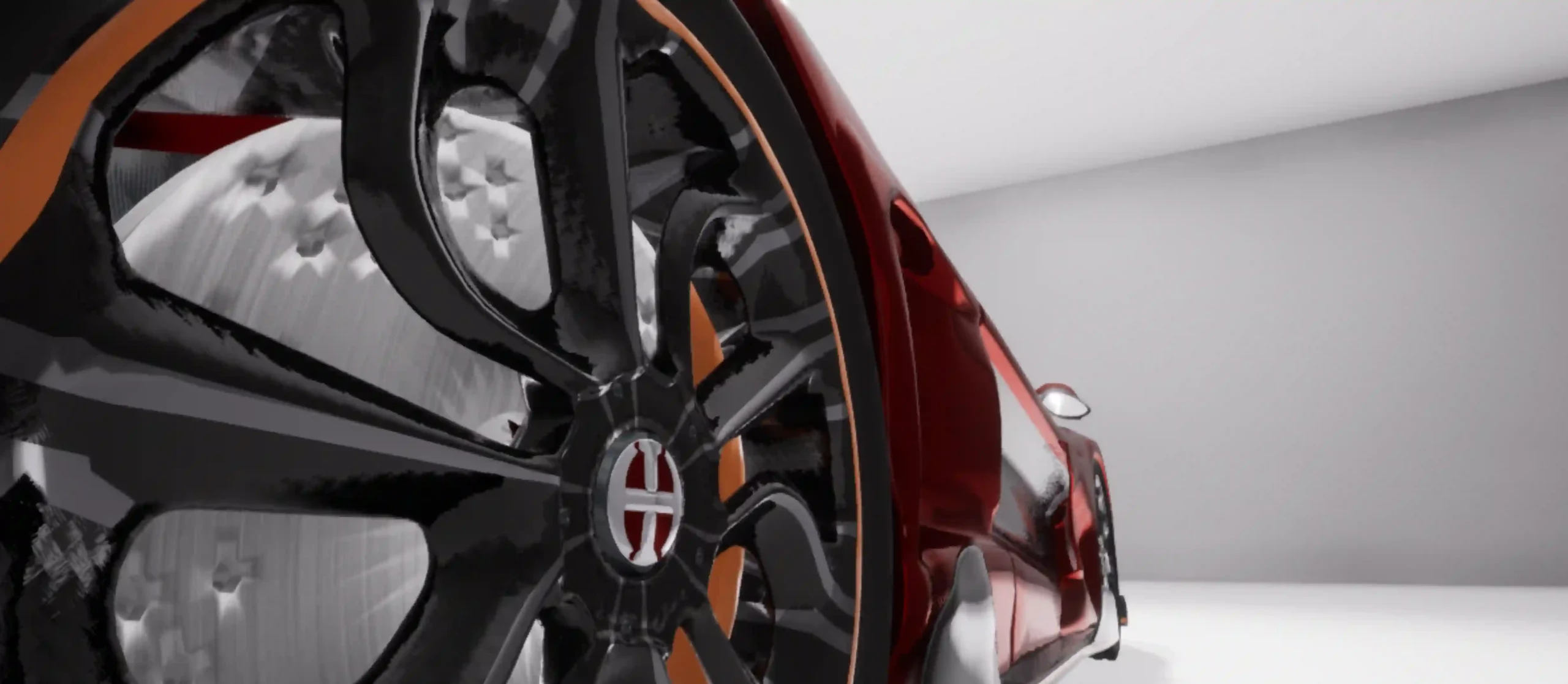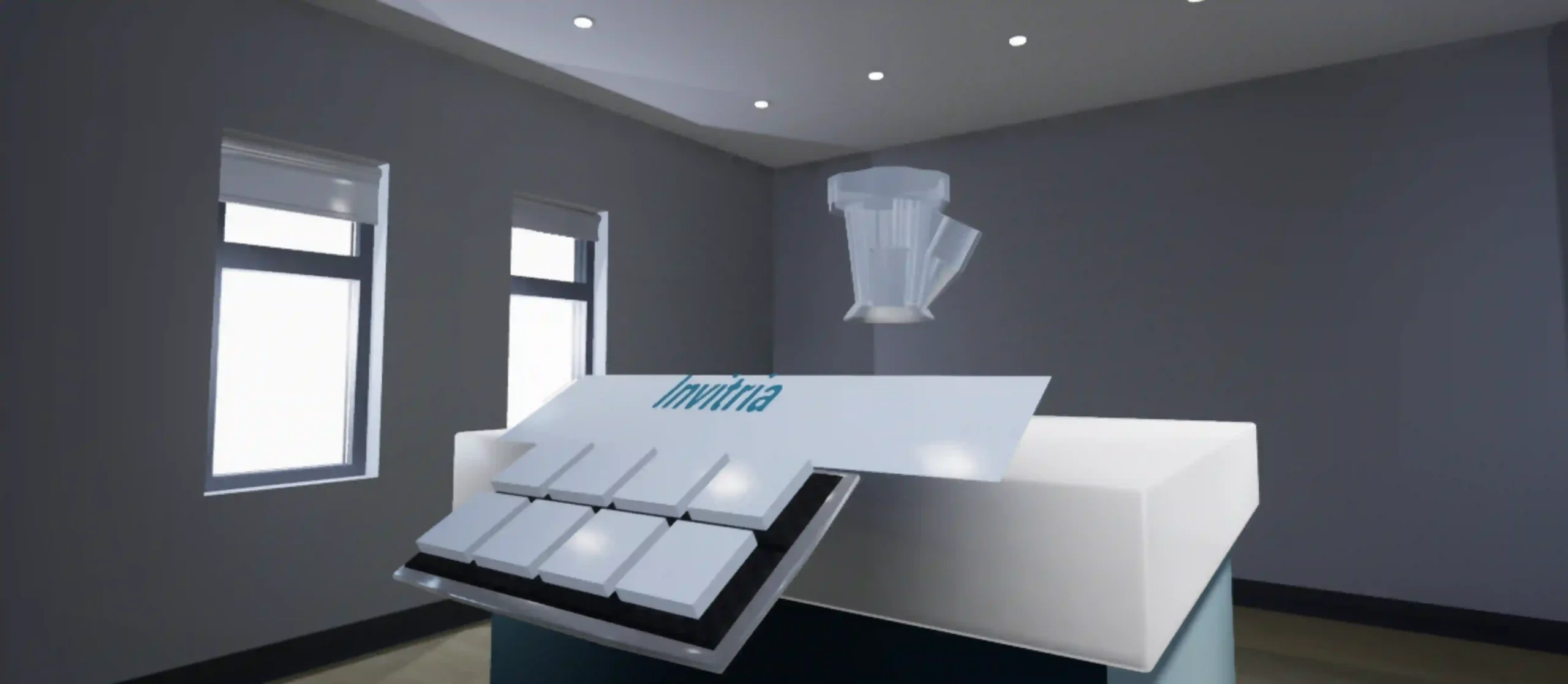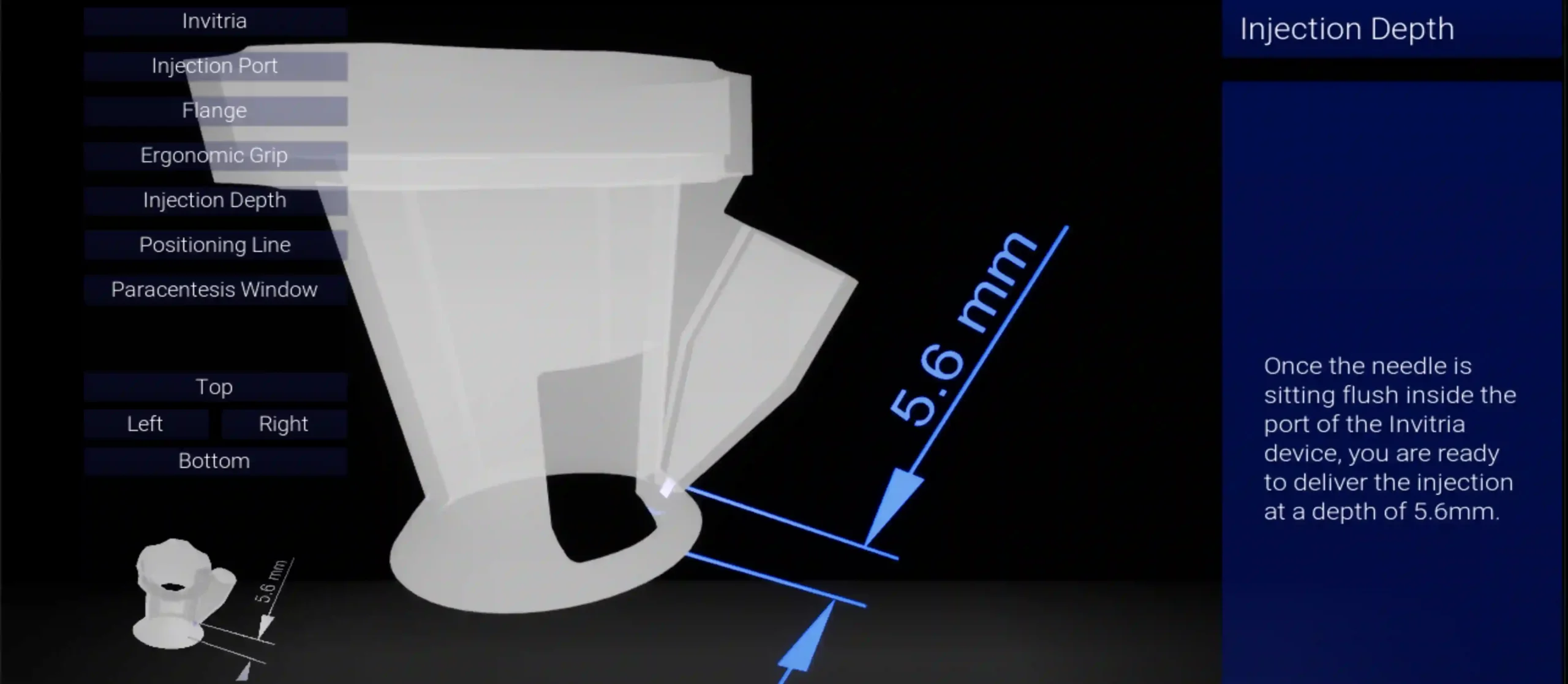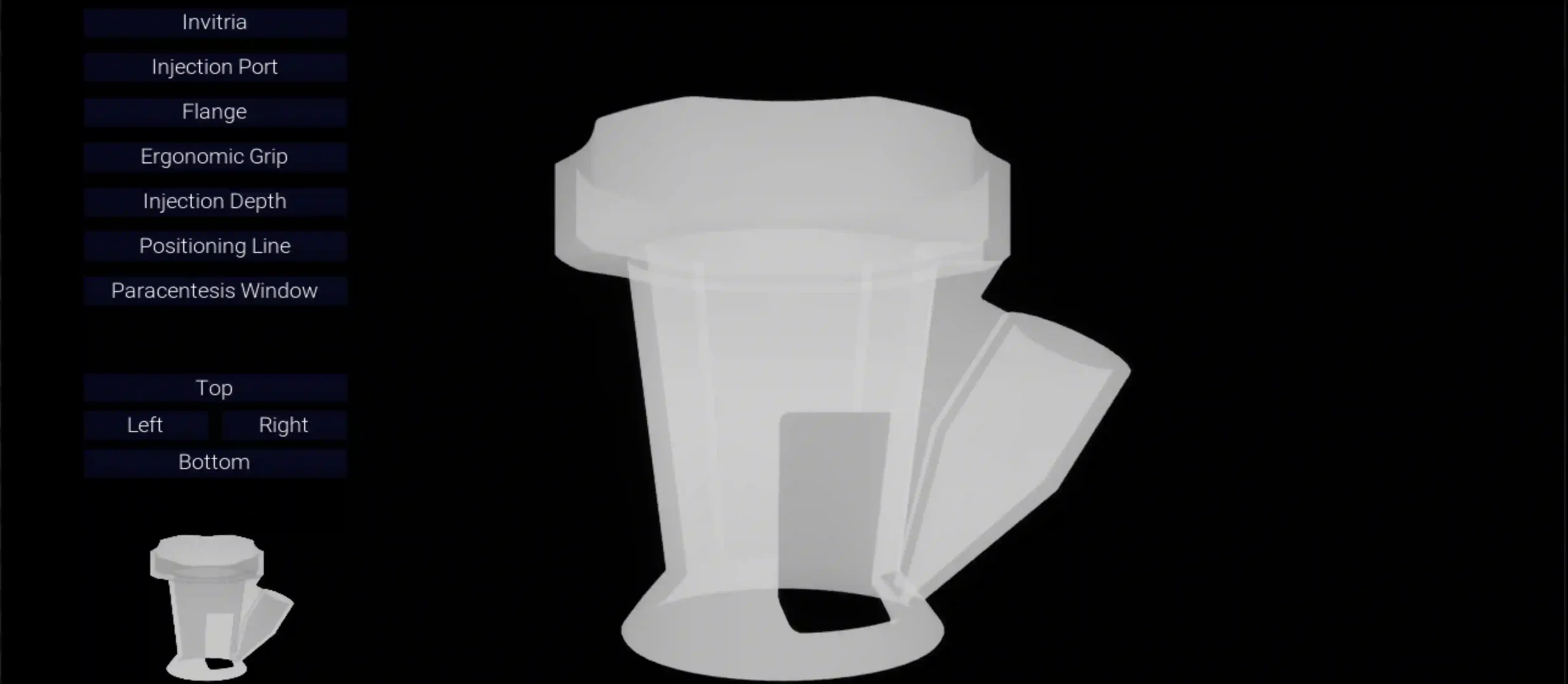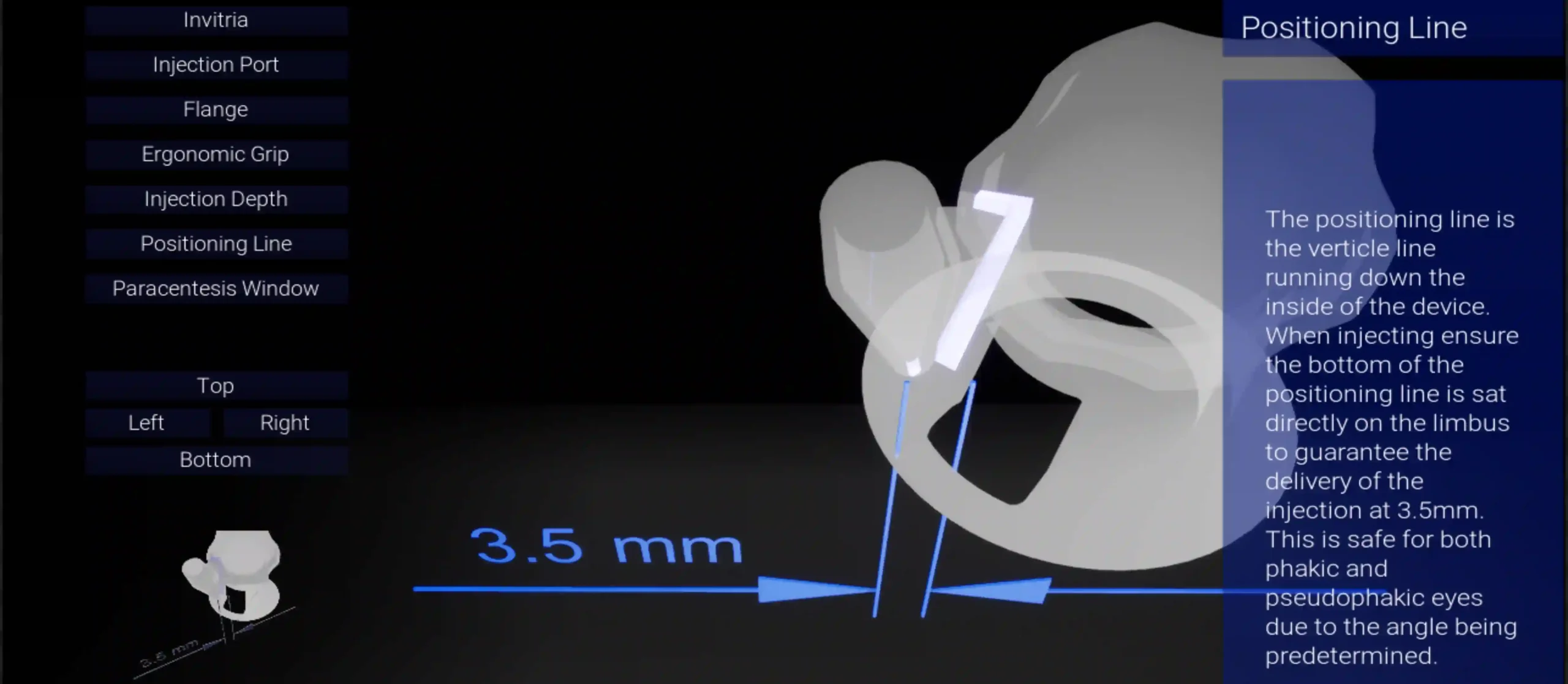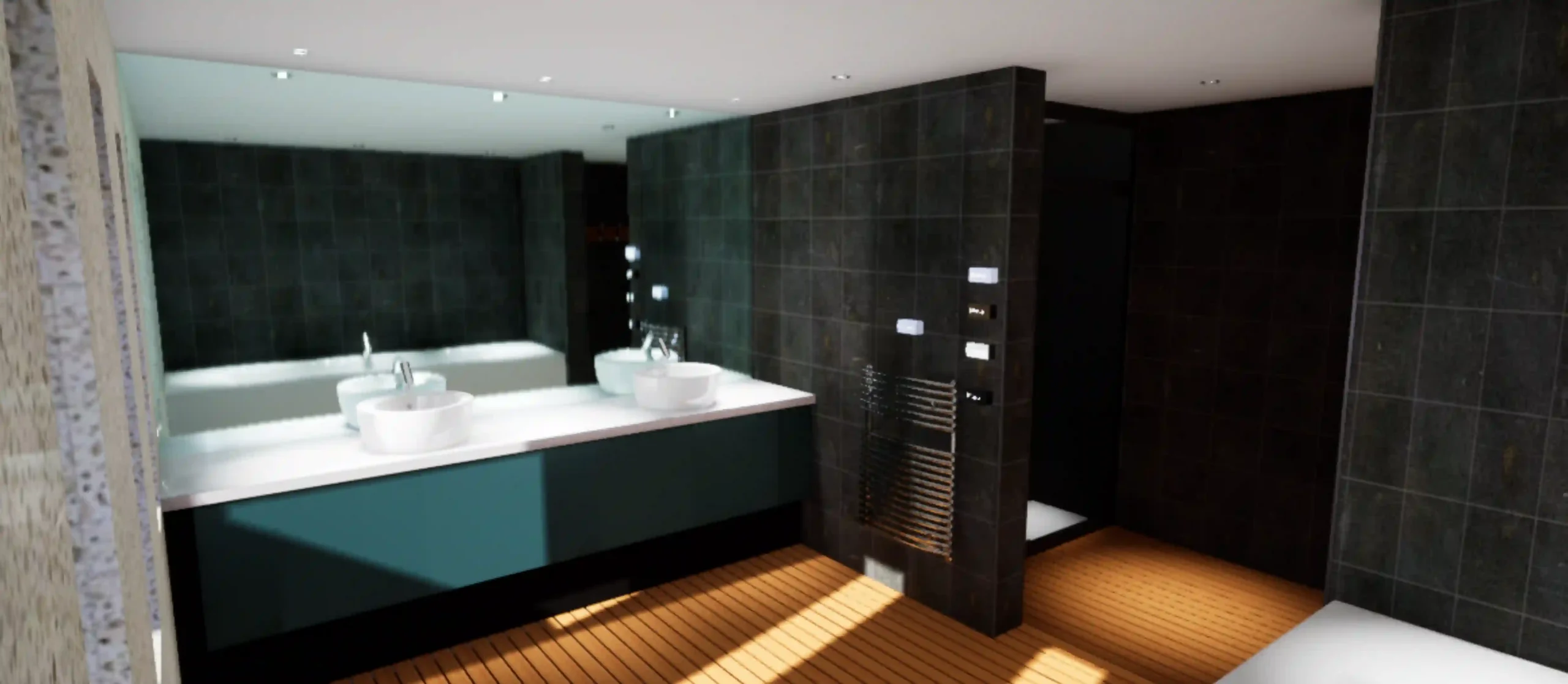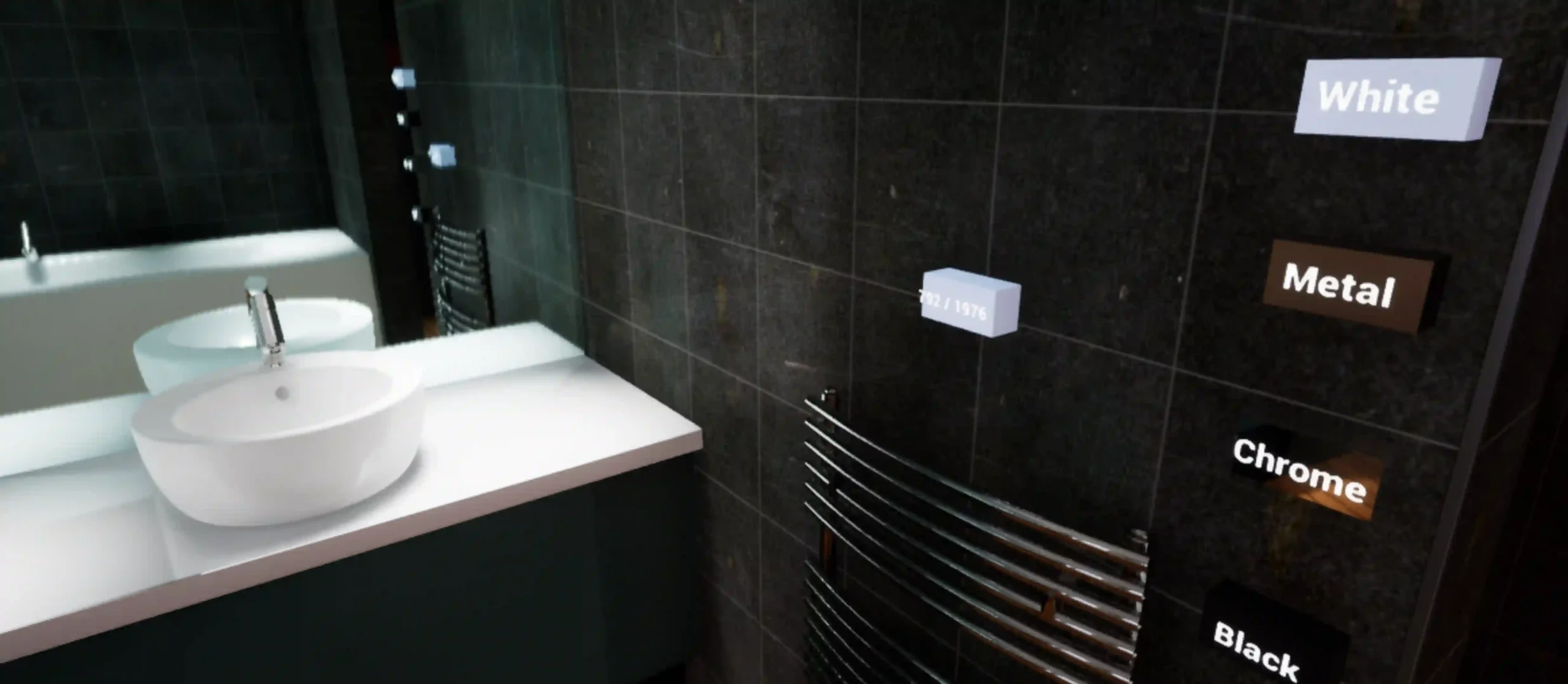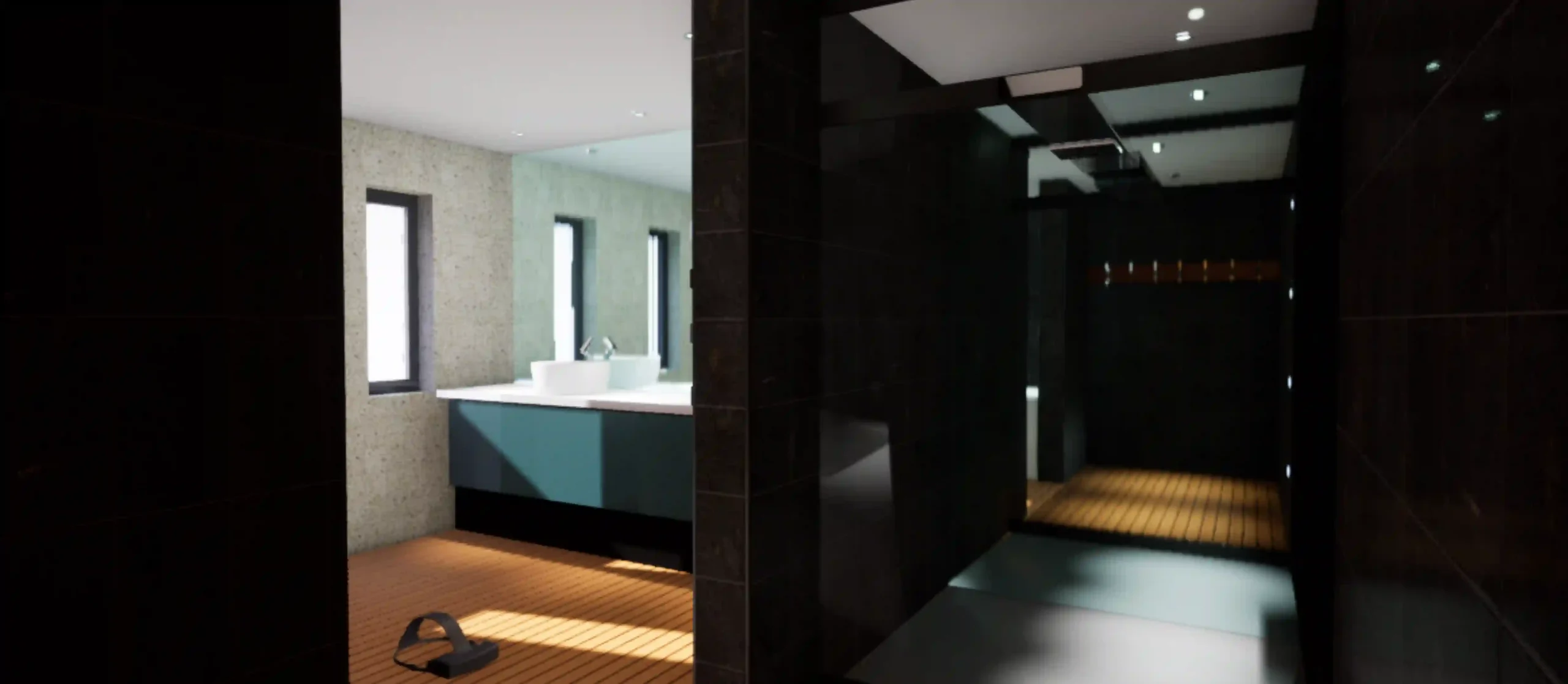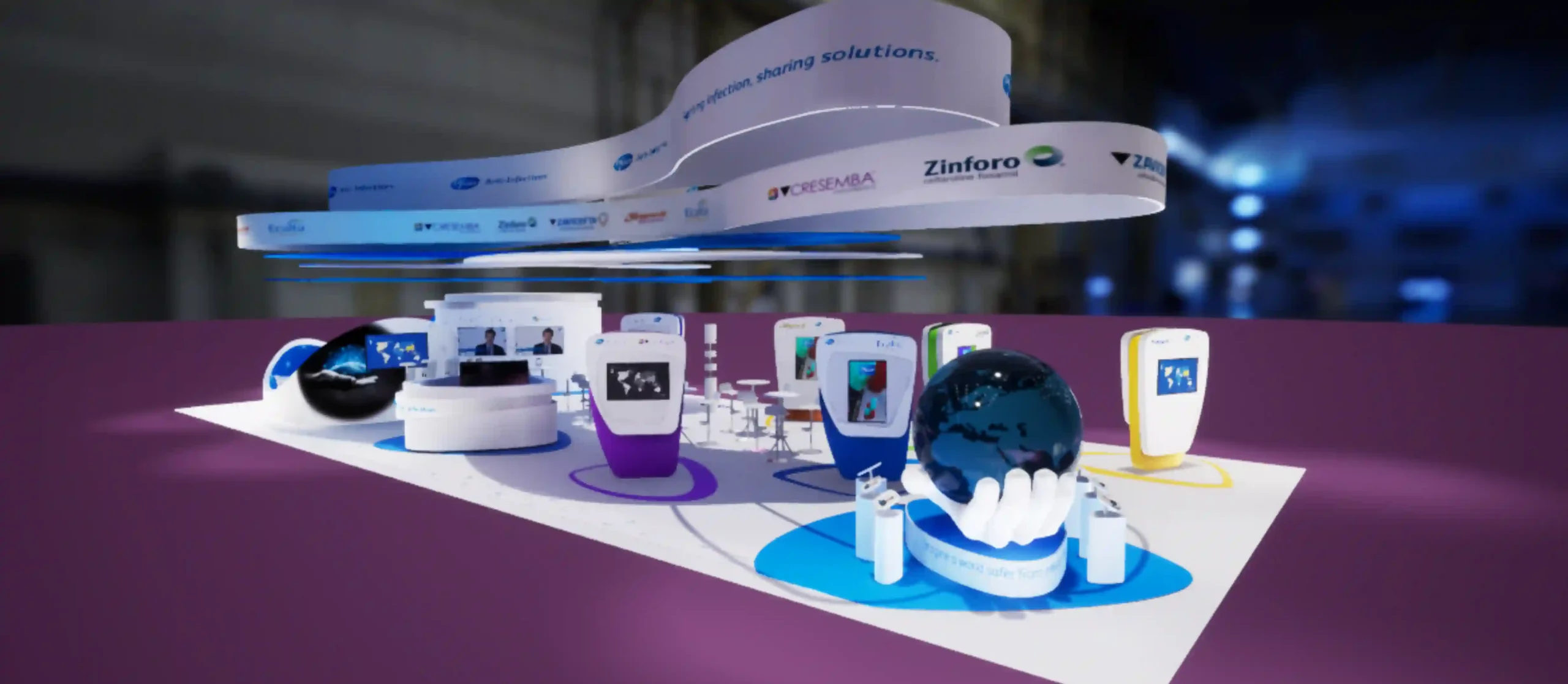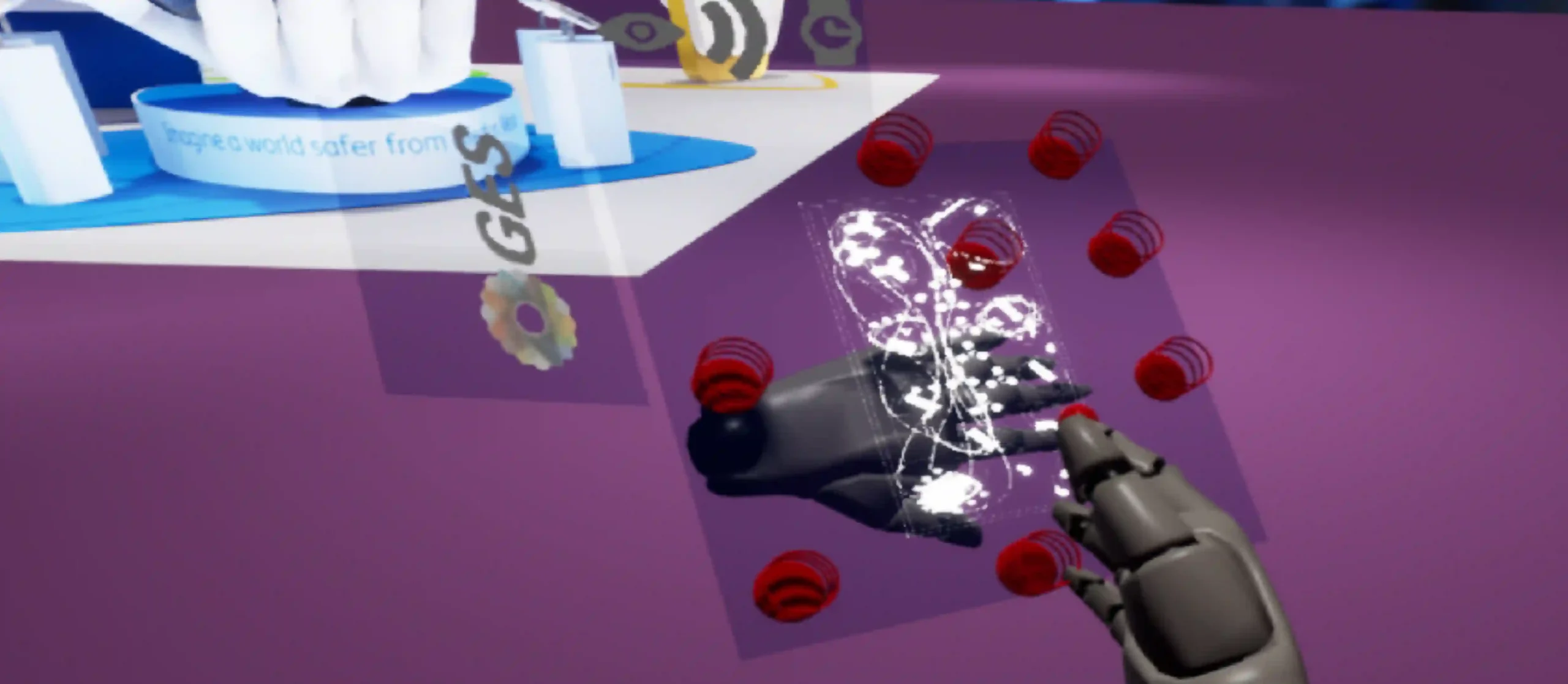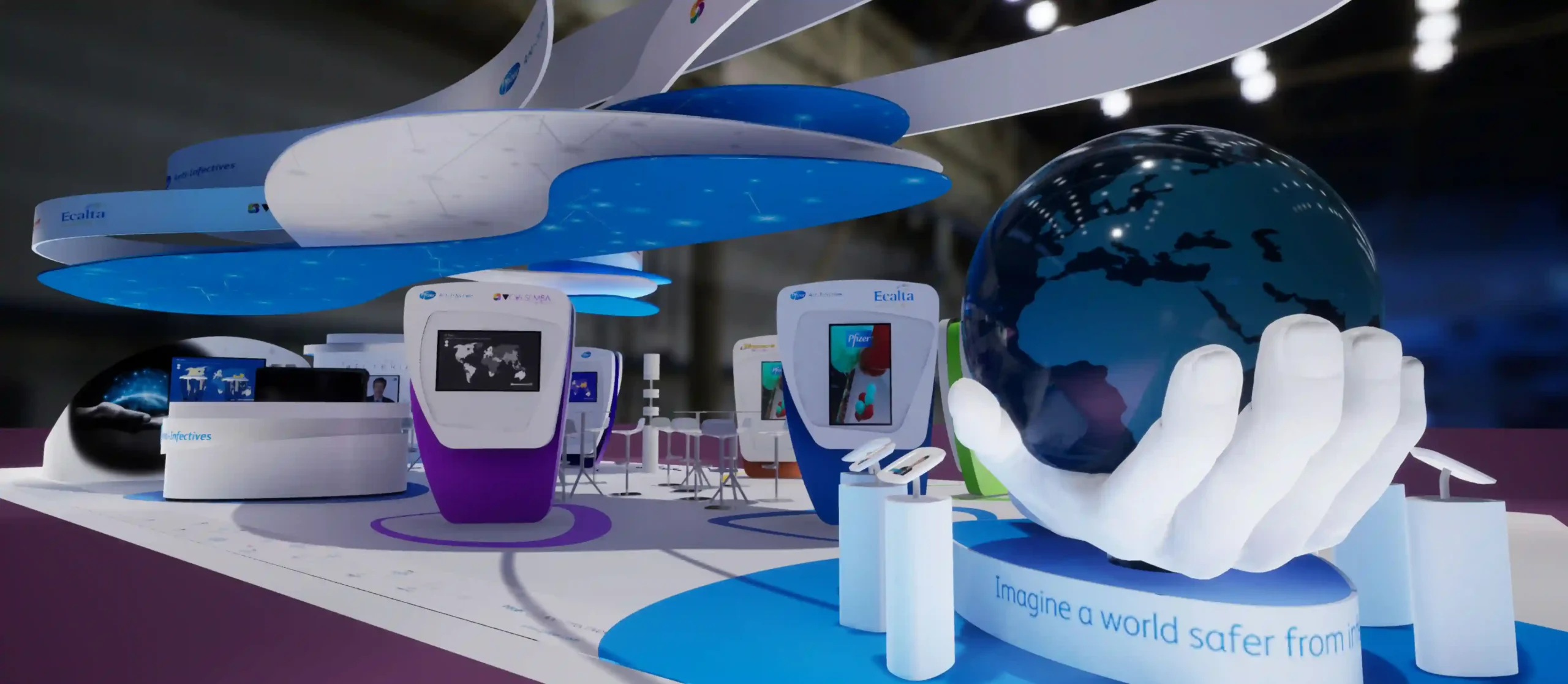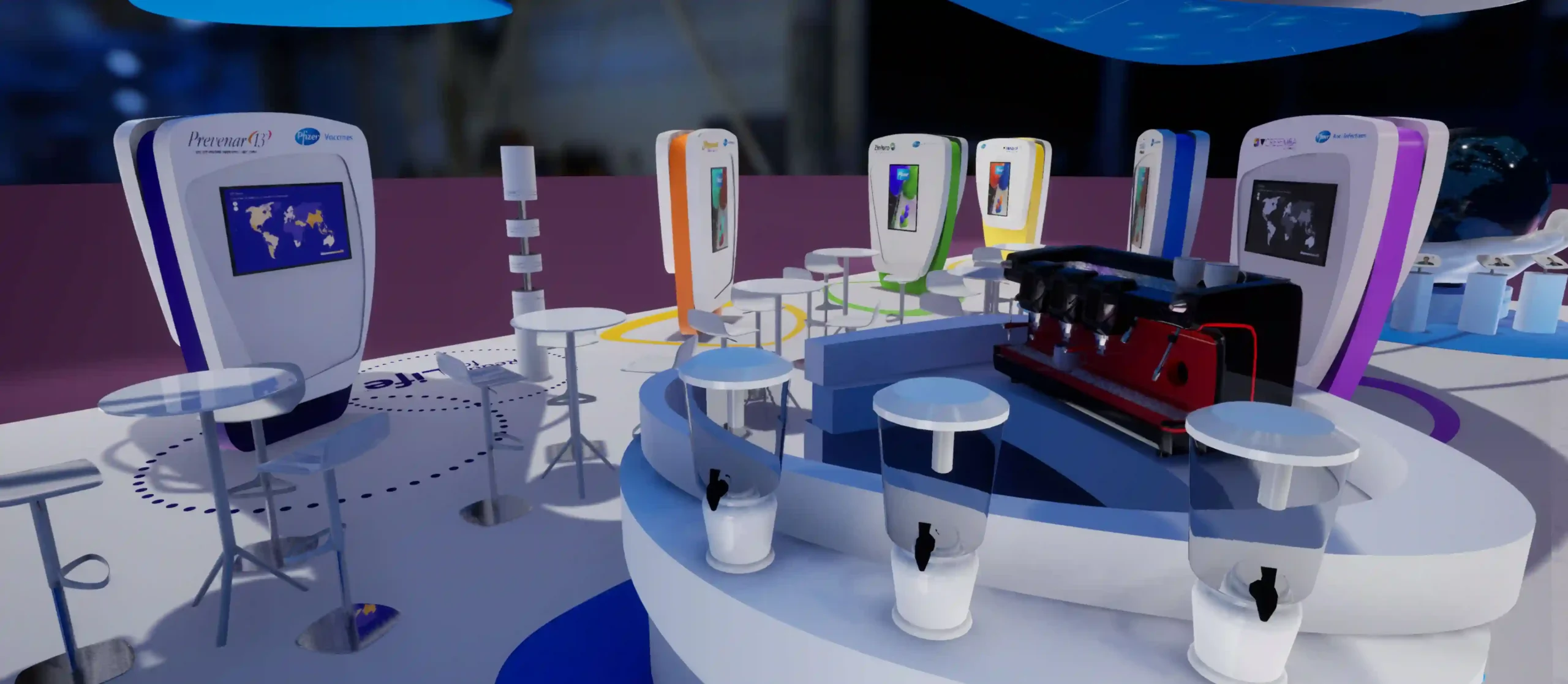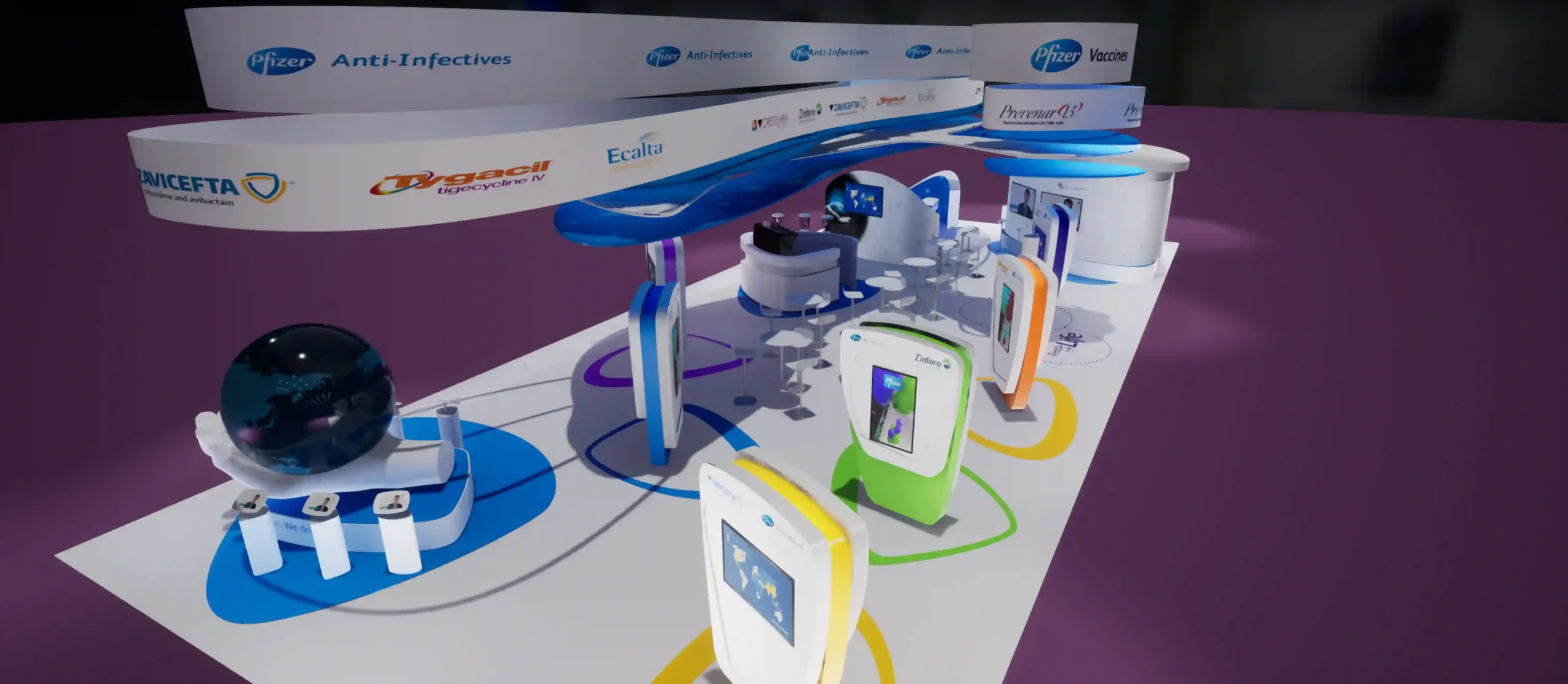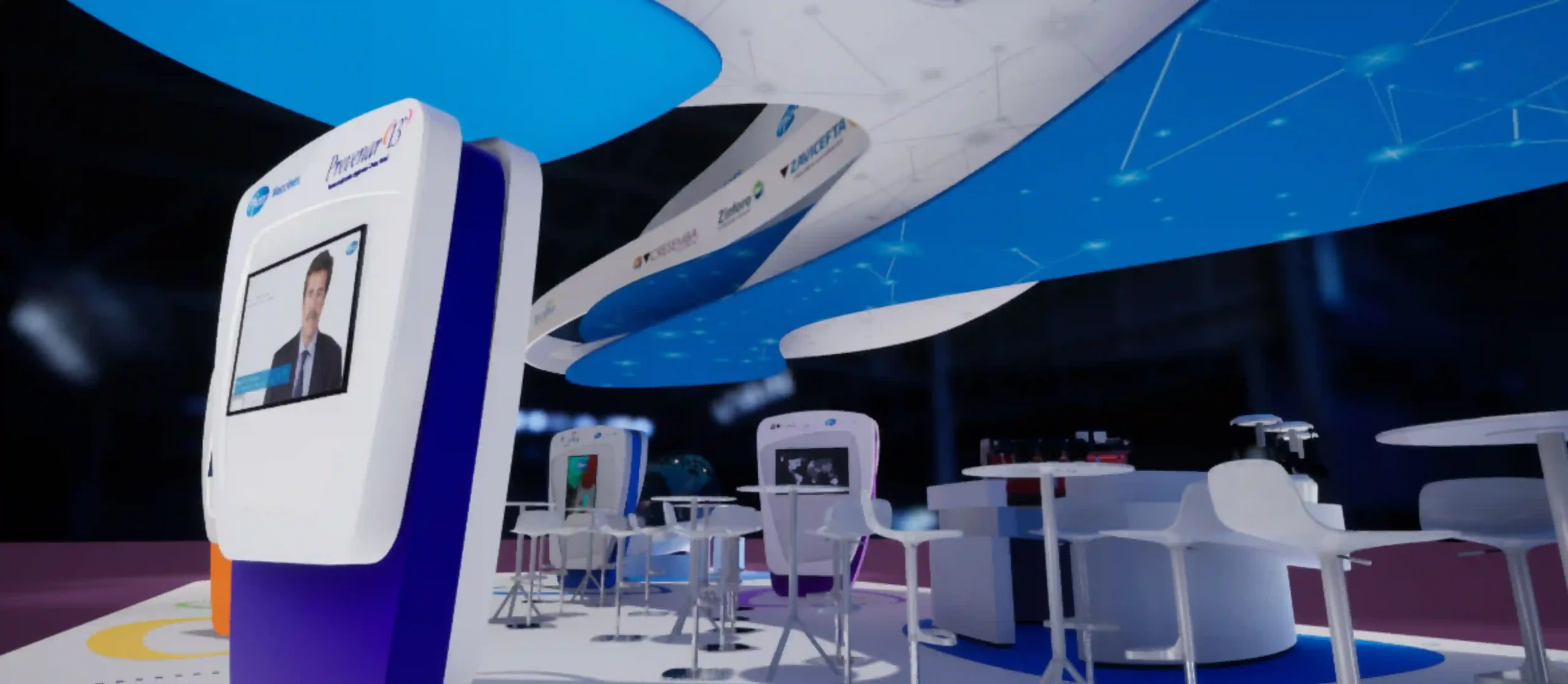The following page presents the range of projects I have produced previously, either on Freelance, when developing skills on personal projects or over my internship a Pixogenic Ltd. These were made using Unreal Engine and other supplementary software for Models, Materials and Animations.
Select from the menu below to see a specific project, or scroll through this page to see them all.
My Unreal Archviz project was started after graduating university in 2020 during the National Lockdown, as an example of my current skills set in 3D modelling and animating in 3D Studio Max, and developing using Unreal Engine.
Every model in the scene with the exception of some foliage and all the trees were modelled by myself using reference images and site plans from the actual final architectural drawings of La Elvira (A relatives Villa in Cyprus). The foliage and trees were downloaded from CGTrader and Turbosquid, and with all modelled and imported assets textured with PBR textures from Cc0textures.
The 3D models and structure took an estimated 3-4 weeks to model, animate and import, with an additional 3 weeks to iterate on the environment, apply textures, apply lighting, and lastly implement all levels of interactivity shown on my youtube channel.
The final project allows for users to navigate the full scene using conventional First person simulation controls (WASD and Mouse) along with a simple zoom function using the middle mouse button. Users can also interact with objects in the scene, having them change or animate by clicking the left mouse button on them if a prompt appears. A video of the full manual walkthrough can be seen here. There is also an alternative slideshow and camera navigation system which is shown on video here.
Users may also configure the structure in one of two ways; either they use the full configuration menu in one of eight locations using four different presets affecting specific aspects of the whole scene, for example tiles and doors, or exterior wall paints/materials etc (shown on video here). Alternatively, to save time they can use the quick configuration system and select one of four pre-sets affecting all eight areas at once, shown on video here.
This is my current progress on my Hybrid bike and Rider project. This project was started after graduating in 2020 during the National Lockdown, as I wanted to showcase my current concept designing, modelling and animating skills.
The Helmet and suit is for a futuristic motorcycle-drone hybrid that switches between a flying drone mode and motorcycle road traversing form. The helmet can be opened or closed automatically depending on the rider’s needs as shown in the slideshows.
I used a third party human model from CGTrader to get the proportions of the character right, before augmenting it in its entirety to design the airbag suit for the rider. The Helmet was designed first, with the panelling and opening designed and animated before implementing telescopic two or three stage ball jointed pneumatics to support the movement of individual parts. The Helmet alone consists of 122 entities, most dummies, allowing for organised movement hierarchies and smooth opening and closing for the helmet.
In order to showcase the rider more easily, I created a simple Unreal Configurator that animates the helmet upon clicking, and cycles between different angled cameras mapped to number keys. This allowed me to record high resolution video of the animations in real time and show the movement of parts in different areas of the helmet without the need to render out from 3D Studio max.
Now that the rider’s design is complete, they will be seated on the existing progress of the hybrid bike, helping to develop the rest of the concept and more ergonomically design the product to account for the comfort and proportions of the rider.
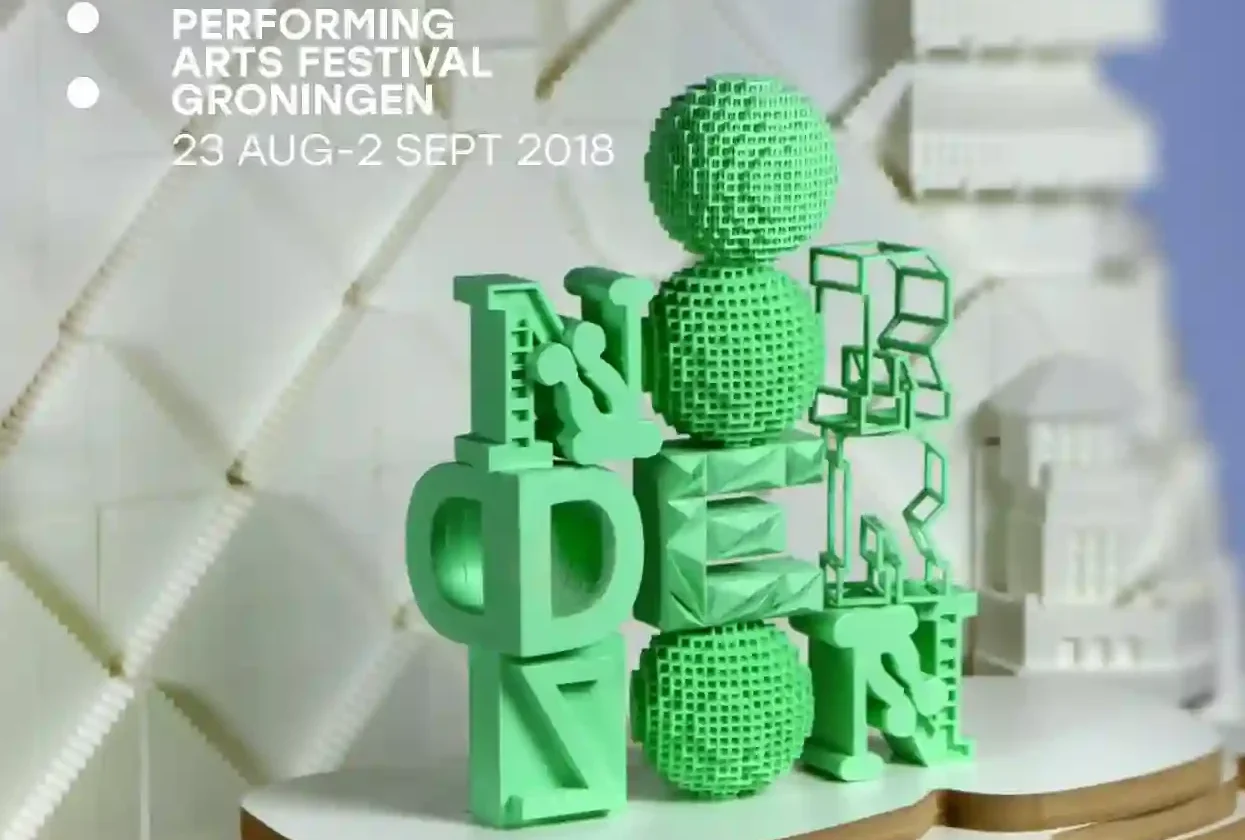
The Noorderzon VR Marketing map was a prototype of a potential interactive installation for use at the Noorderzon Performing Arts Festival, using Virtual Reality technology to allow visitors to navigate in life size, the scale models made by the WERC Collective for Noorderzon promotional imagery.
Users would start by navigating the environment to see key locations and learn more about the festival through interactive posters placed around the scene. Once these posters are interacted with, they unlock new areas to visit on the map relating to the posters they engaged with.
The WERC Collective provided 3D models of one of their maquettes which they used to 3D print and build for the real life event. I then went through the game design asset preparation pipeline with the model in 3D Studio Max, then imported to Unreal Engine and developed the interactive features for Virtual Reality.
Some of the key interactive features include the ability to navigate the space using a central miniature maquette (overlapping the controller with an icon brings the user to the corresponding location), rotating the map using arrows on the left controller, and a trigger controlled laser pointer system for showing interest in certain event posters.
The experience garnered attention from both experts in the field of VR at the Hanze University, and newcomers interested in the project when approaching potential testers for my thesis evaluation. In the end, the product successfully entertained the target audience and provided the WERC Collective with helpful information on how to approach development of such an installation in the future.
Awoken was made for a group project in my Game Design and Development course. My partner and I developed a Prototype First Person Shooter inspired by Sci-Fi games like Portal, Halo and Doom.
My role during the project was to develop and iterate on the games’ mechanics. I used Unreal’s blueprint scripting system to program all of the interactions and mechanics, as well as implementing all of my groupmates’ assets.
I also did the level design for the project, using the assets and environments my groupmate designed by placing objects and enemies in specific locations so as to trigger at key moments when users would navigate the structure.
The end prototype was a success, entertaining the target audience (fans of Sci-Fi First Person Shooters) and providing them with enough gameplay to leave them wanting more.
My Automotive Configurator was developed to showcase the skills and knowledge I gained over the course of my 6 Month Internship at Pixogenic Ltd in 2018.
With the aid of my superiors at Pixogenic LTD, I was able to 3D model a concept car of my own design from scratch, then later rigging and animating portions of the vehicle I planned on having be interactive. I then developed the interactive features for it using the Unreal Engine blueprint system to create a desktop and then a VR configurator proof of concept.
The car and all its animations took around 3 weeks to complete, with a further 3 weeks dedicated to programming the configurator using Unreal’s Blueprint scripting.
Using the existing interactive systems from the desktop configurator, I was able to make a simple VR version of the system in about 2 days. The VR system uses collision boxes and coloured text renders on cubes to allow users to interact with and change the cars colours, animate sections of the vehicle and seat themselves inside the car. Examples of these collision-triggered cubes can be seen in the slideshow, and a full video demonstration of the desktop configurator is shown here on my youtube channel.
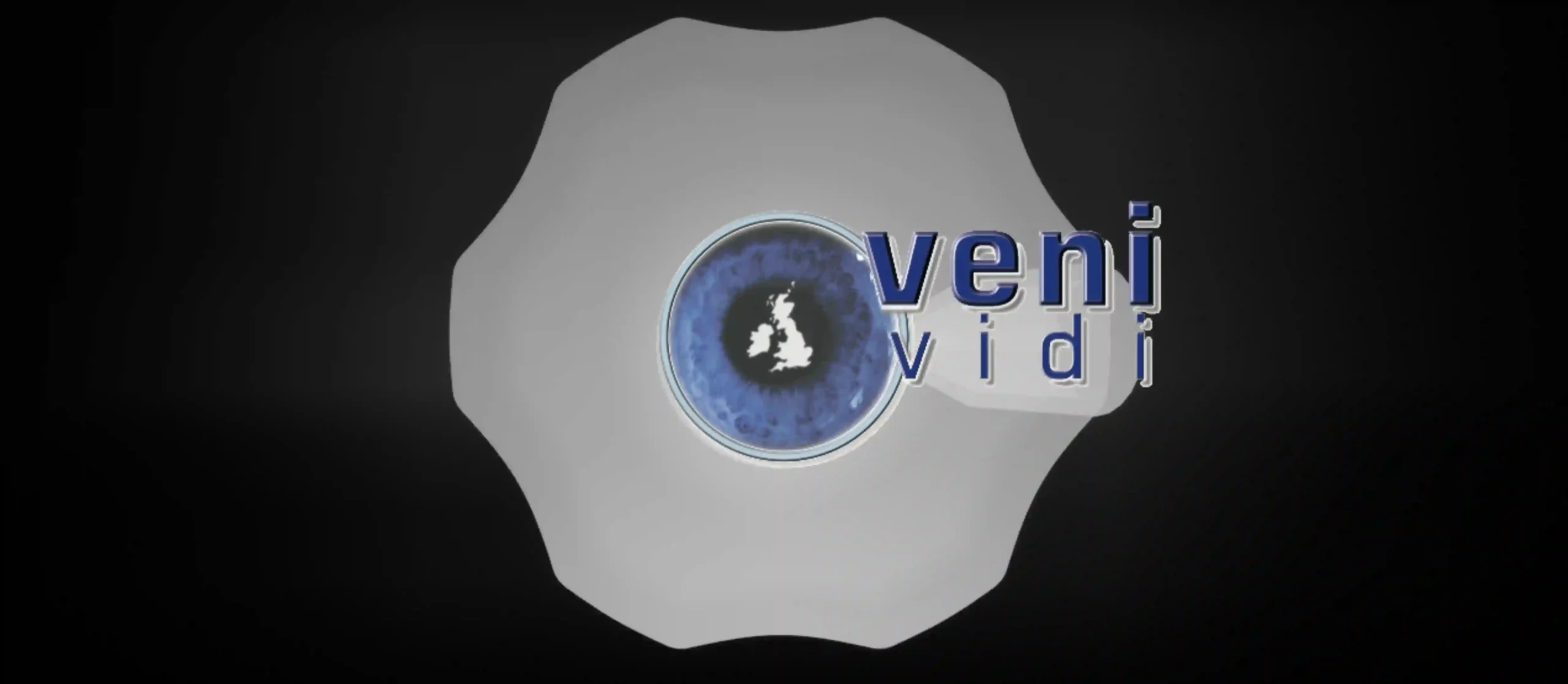
The Invitria Project was a previously existing private project made for one of Pixogenics’ Clients, Veni Vidi. As the project progressed, the client became interested in the application of configuration in digital marketing for their product, the Invitria, on their website.
This prototype was made to illustrate the possibilities of using such a system. First the desktop HTML5 version was designed, and then a supplementary VR version was created for potential use at trade events and office visits.
Users can select different features on the left of the screen, showing highlighted sections of the product alongside text descriptions of the feature on the right. By clicking the variable view tab on the bottom right the user can freely move the product with its current highlighted feature and 3D measurements.
This Bathroom was a pre-existing asset designed and provided by Pixogenic. They wanted to use it to showcase a highly realistic bathroom configurator to illustrate the possibilities of working with Unreal to design VR configurators for their clients.
The entire scene was modelled in 3D Studio Max with Vray, and imported using Datasmith, with no changes or materials added from Unreal, showing the potential speed of the working pipeline between the two softwares. Then once imported, I exported the data from the prototype Datasmith build into an Unreal Engine 4.13 build that allowed for VR implementation, and used Unreal’s blueprint scripting system to design the interactive features.
The Mirror perfectly reflects objects in the scene including the headset and controllers of the user, as well as the scene as a whole when changes are made. Additionally, buttons next to the radiator change the type or material of the radiator to allow for 8 different combinations.
Global Experience Specialists (or GES for short); an existing client of Pixogenics’, provided a “Trade Event Booth” design they made, with the intention of us experimenting with it and finding interesting and innovative ways of presenting their designs via VR.
GES and Pixogenic wanted to see the capabilities of implementing booths into VR examples for clients to see and experience the environment prior to greenlighting the final design.
After importing their design into Unreal and ensuring the design was adequately similar in look and lighting to the provided 3D Studio Max example, I added VR functionality and implemented a navigation menu to the left arm of the user that can be pressed using the right arm. This meant users could stand completely still yet still have full navigational control of their environment, seeing key points in the scene with ease.
